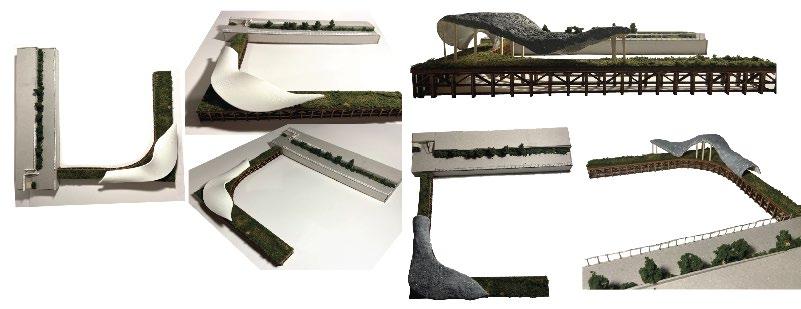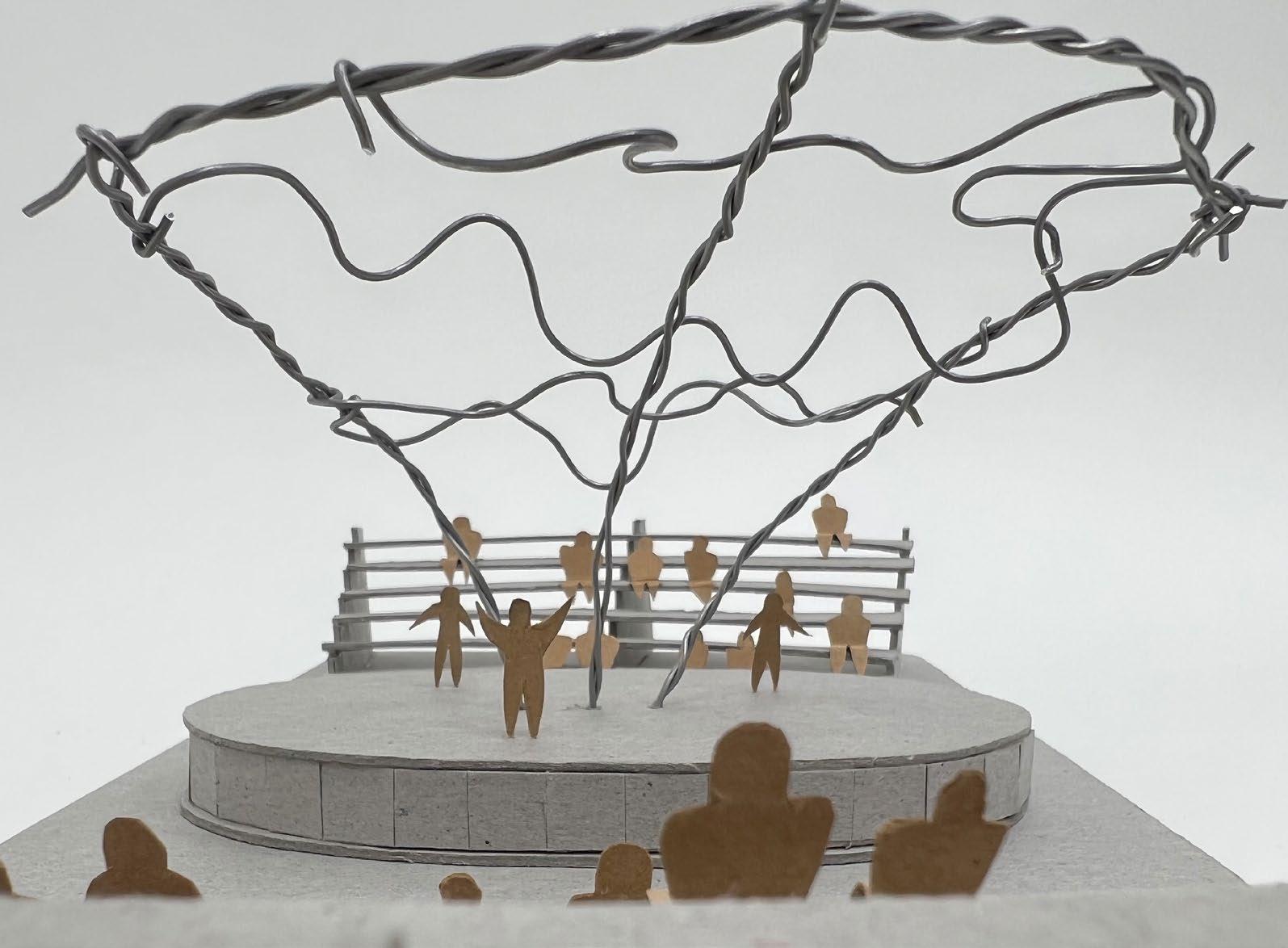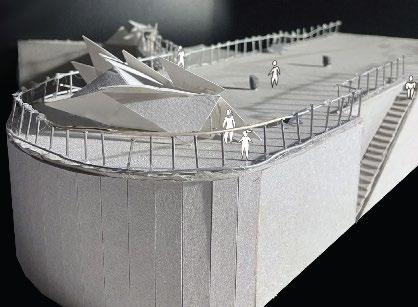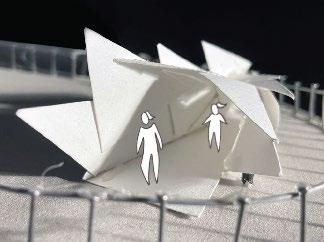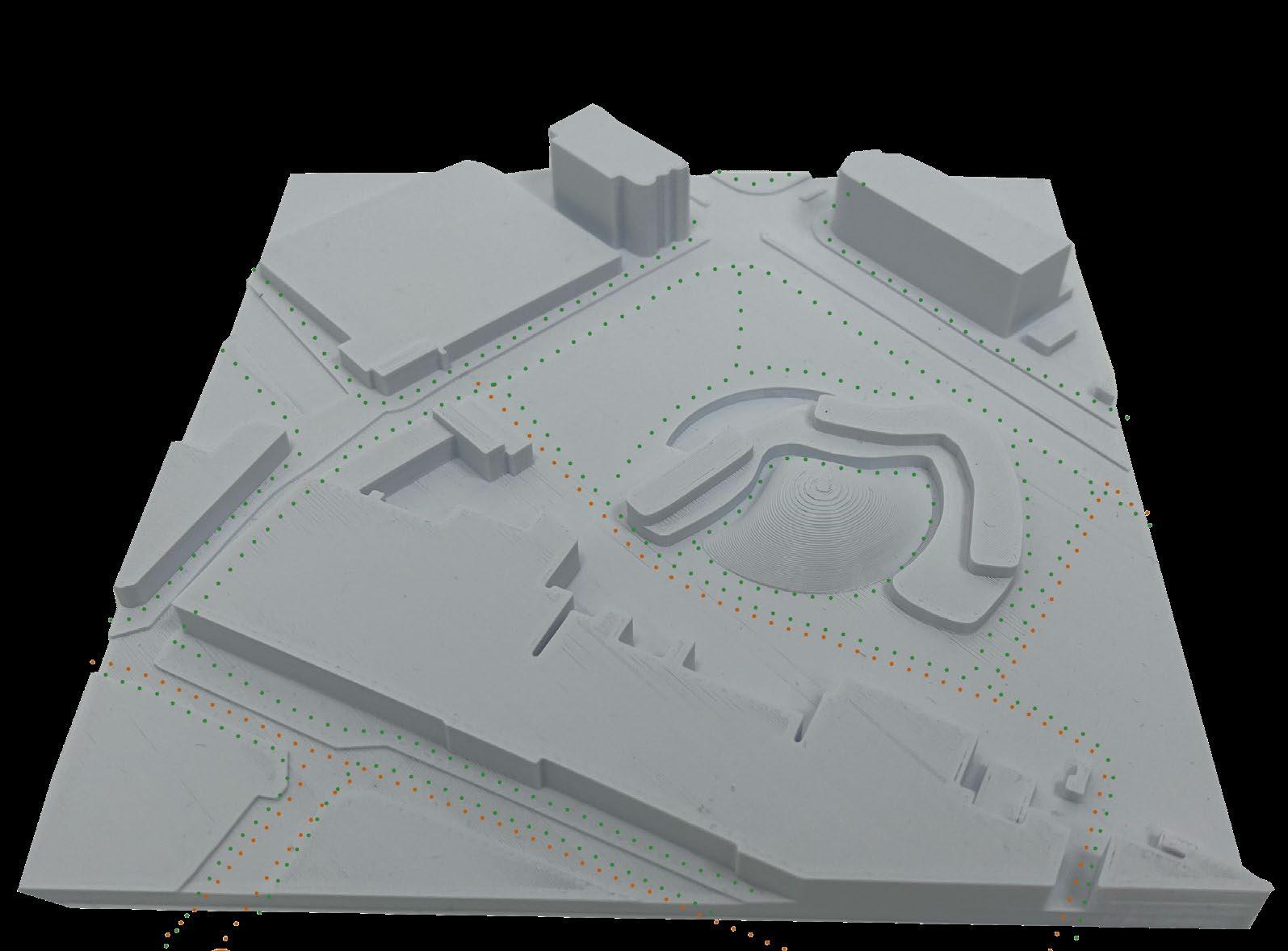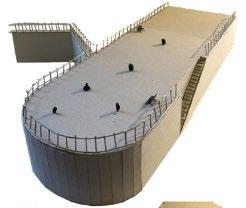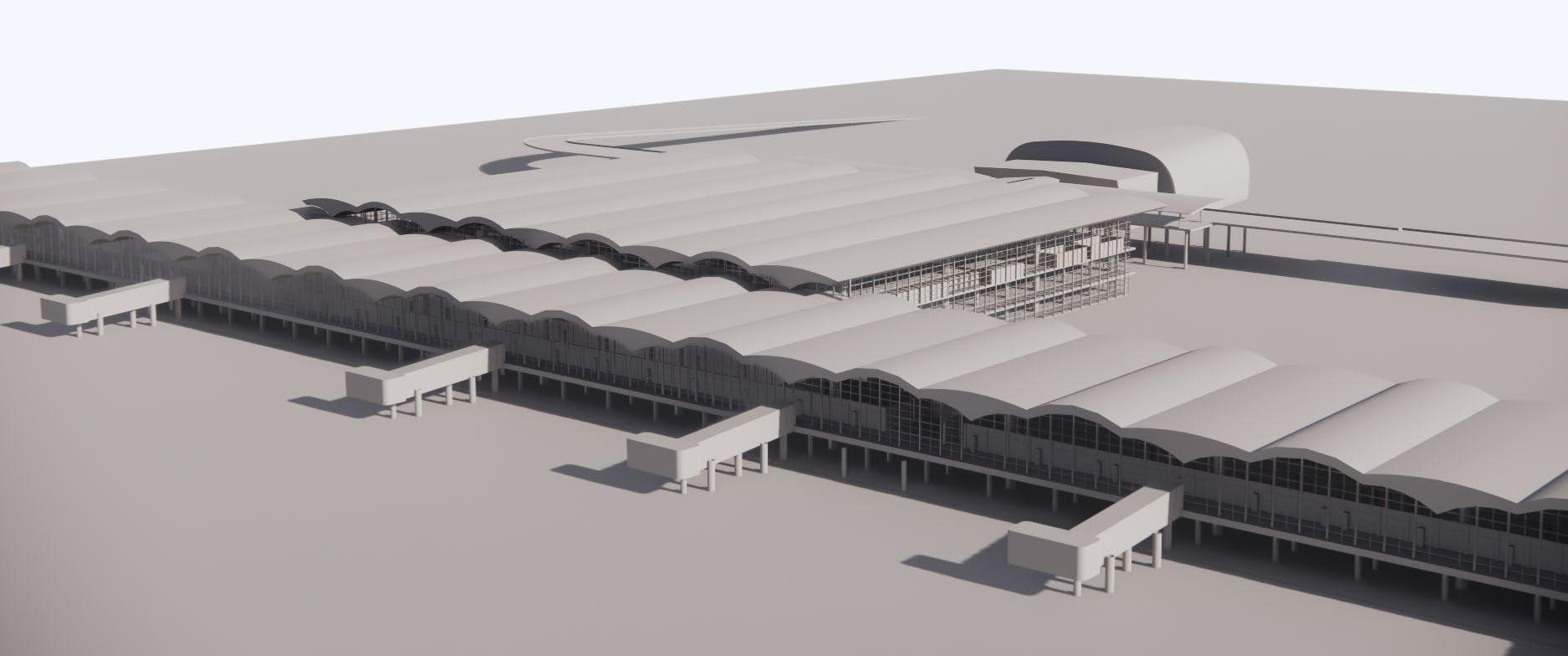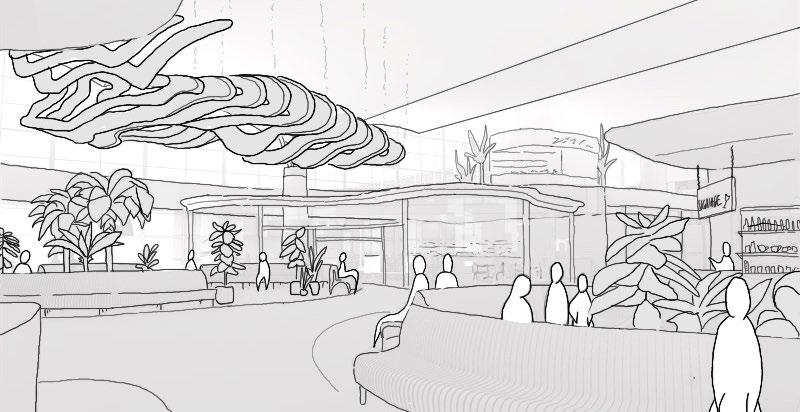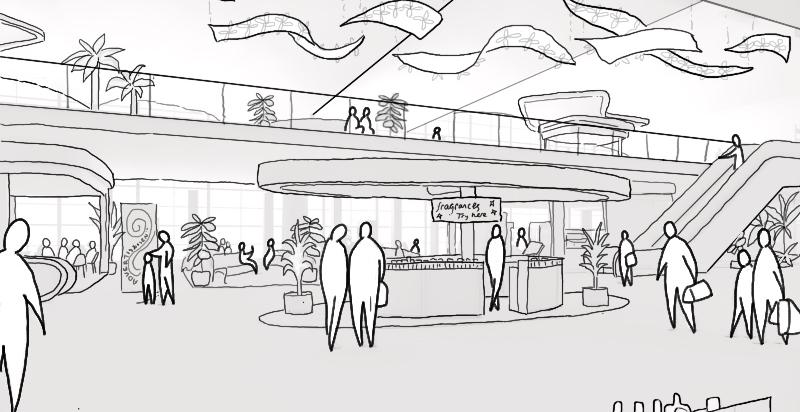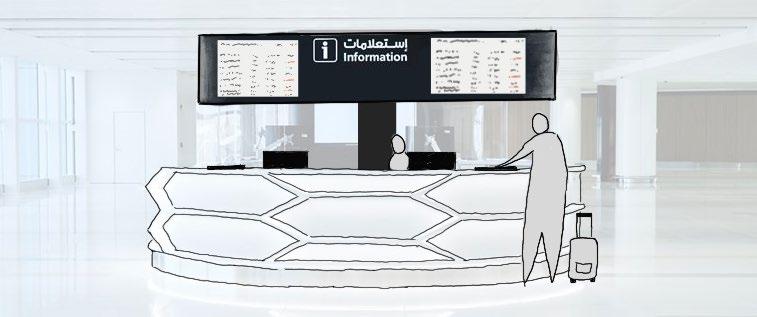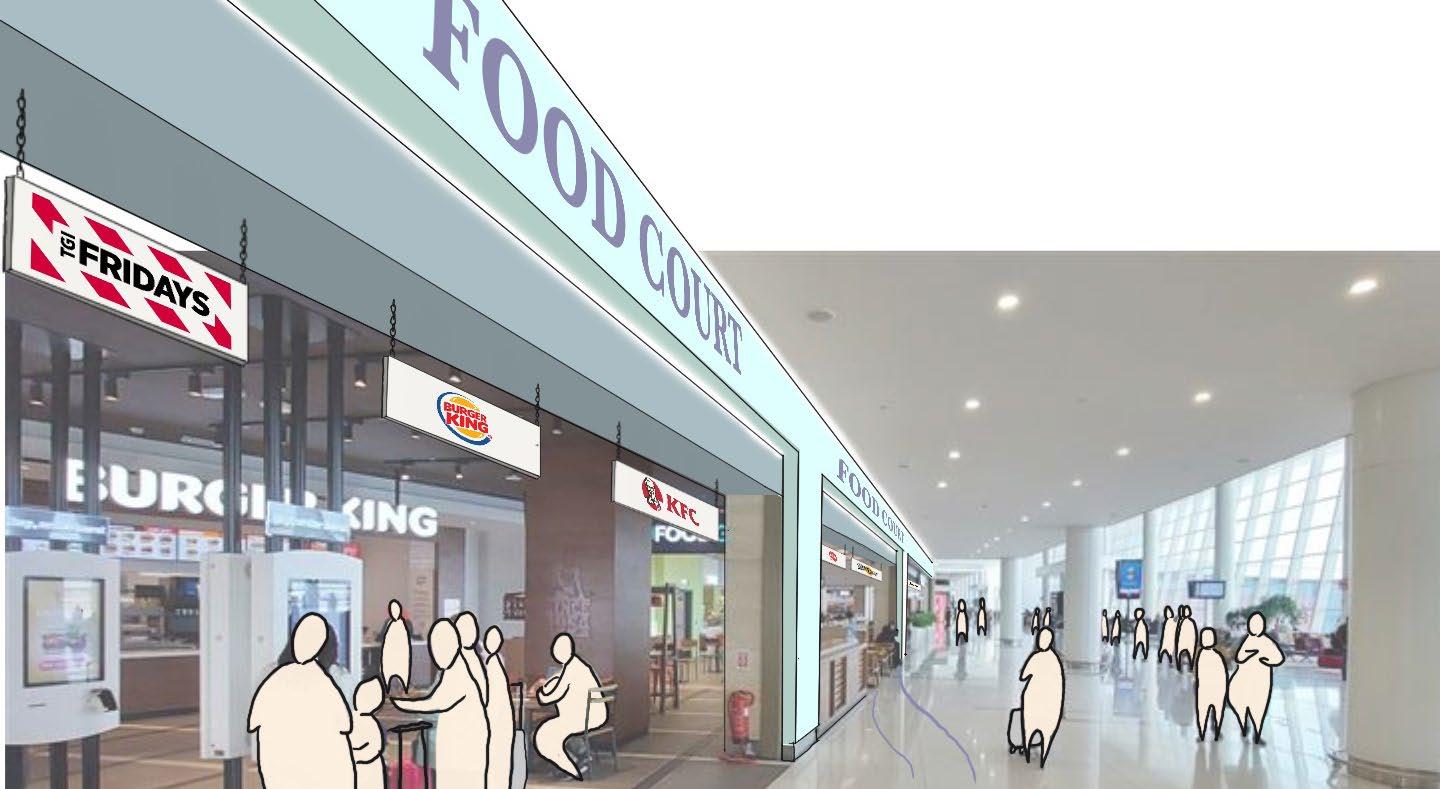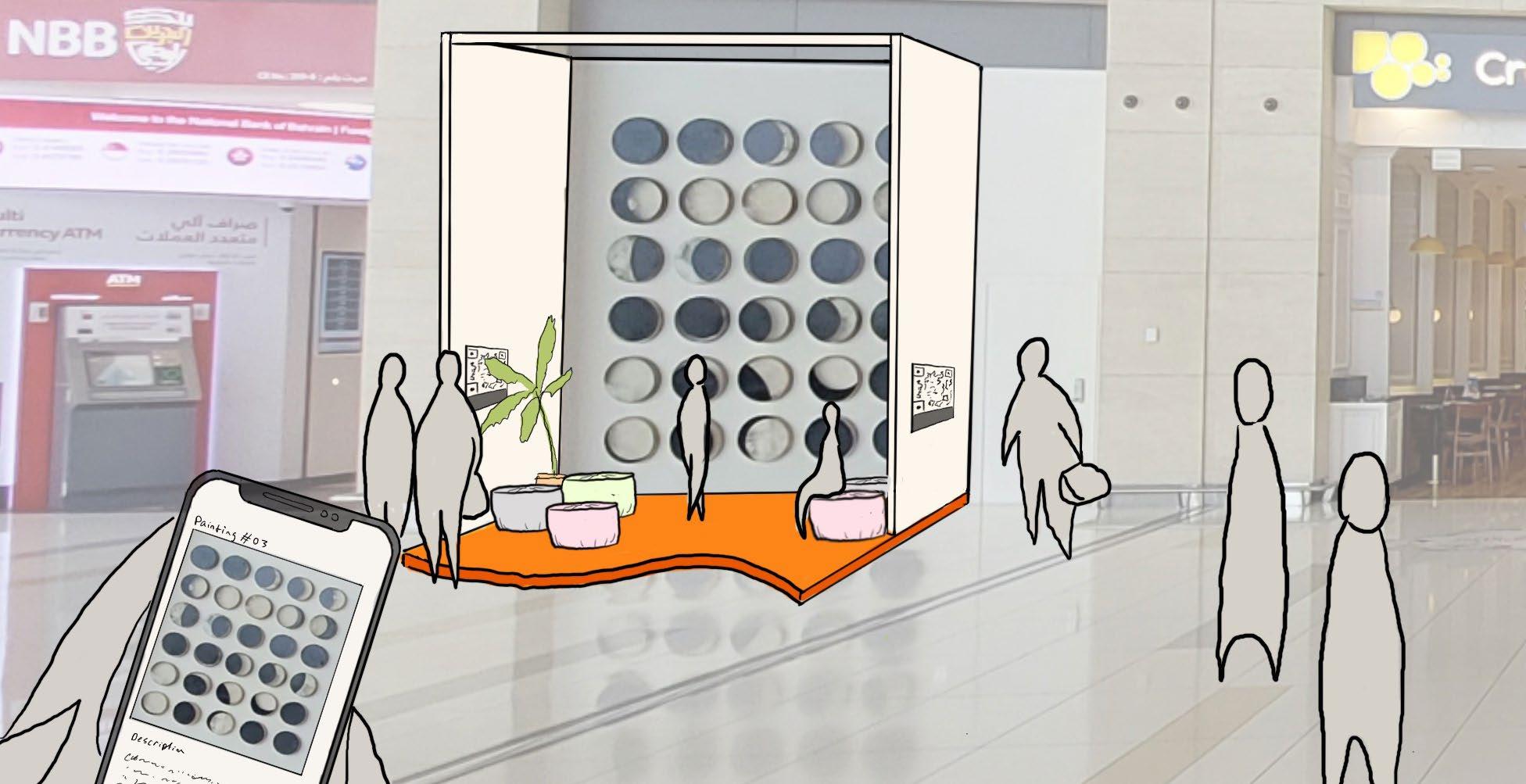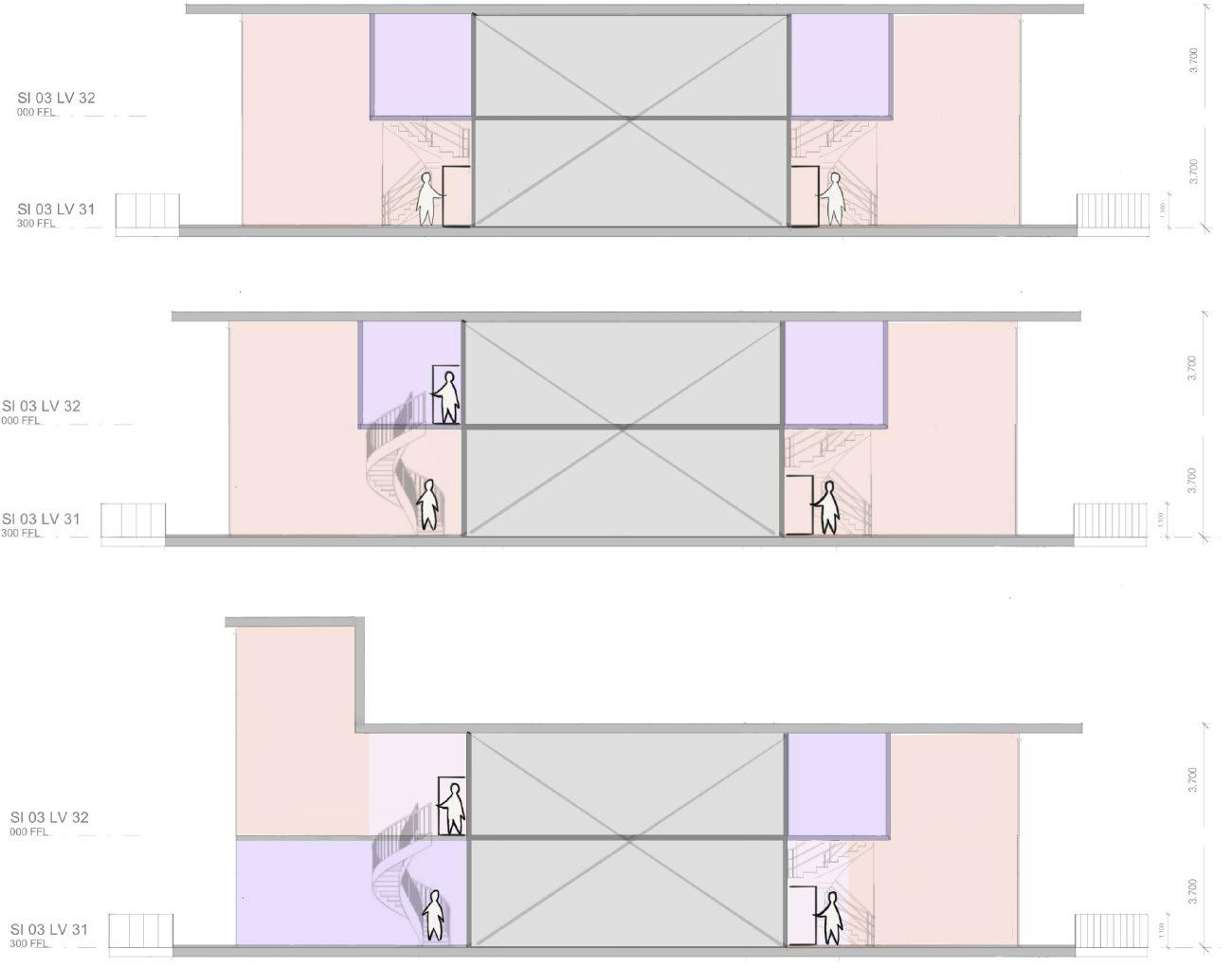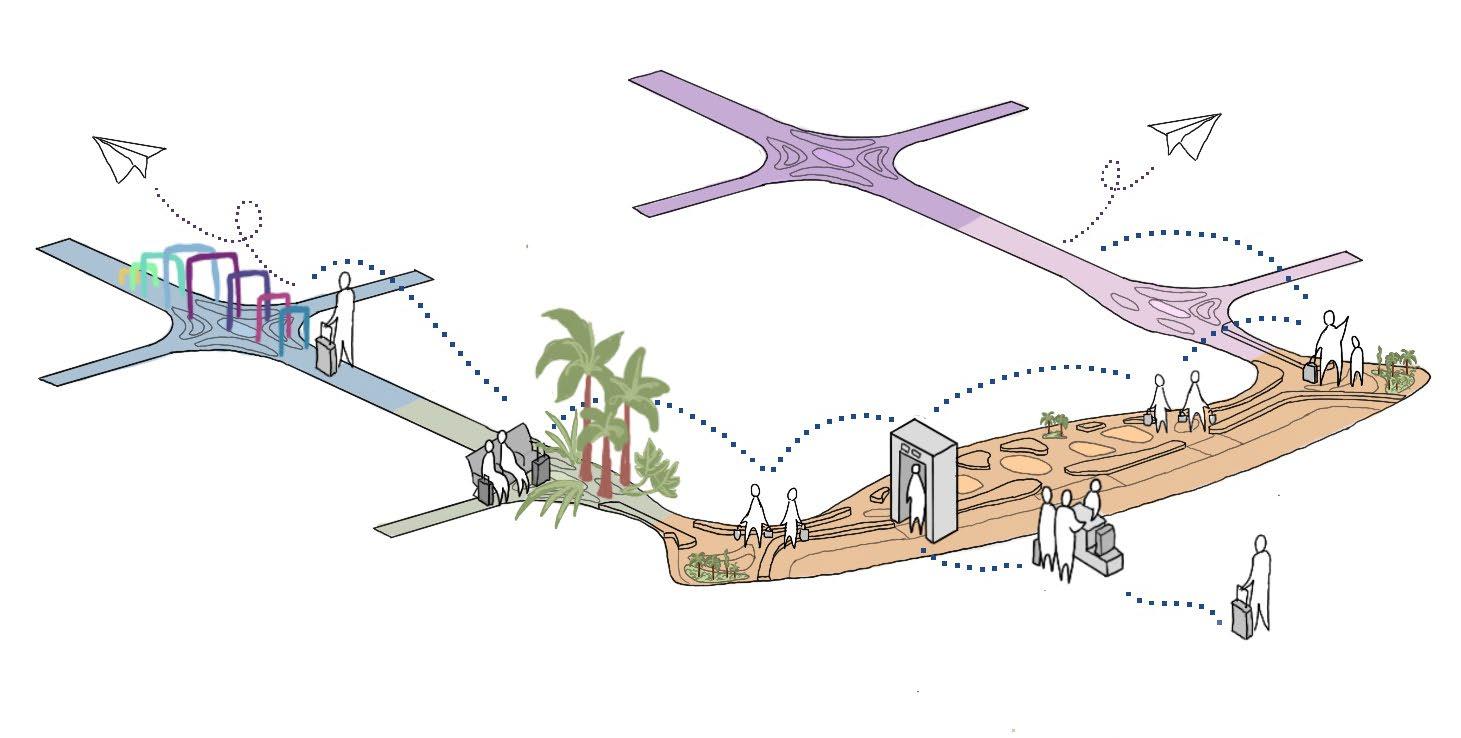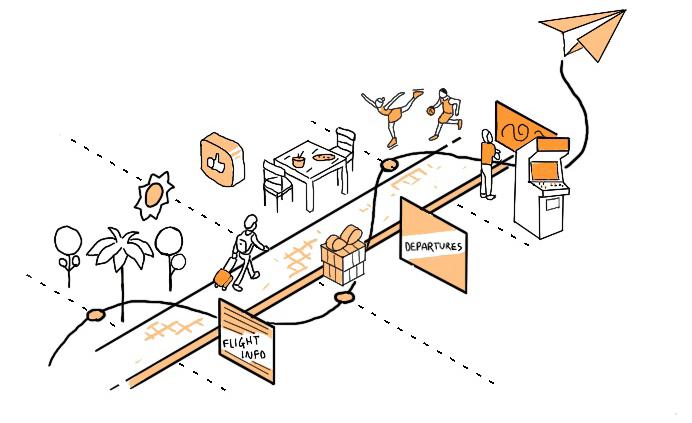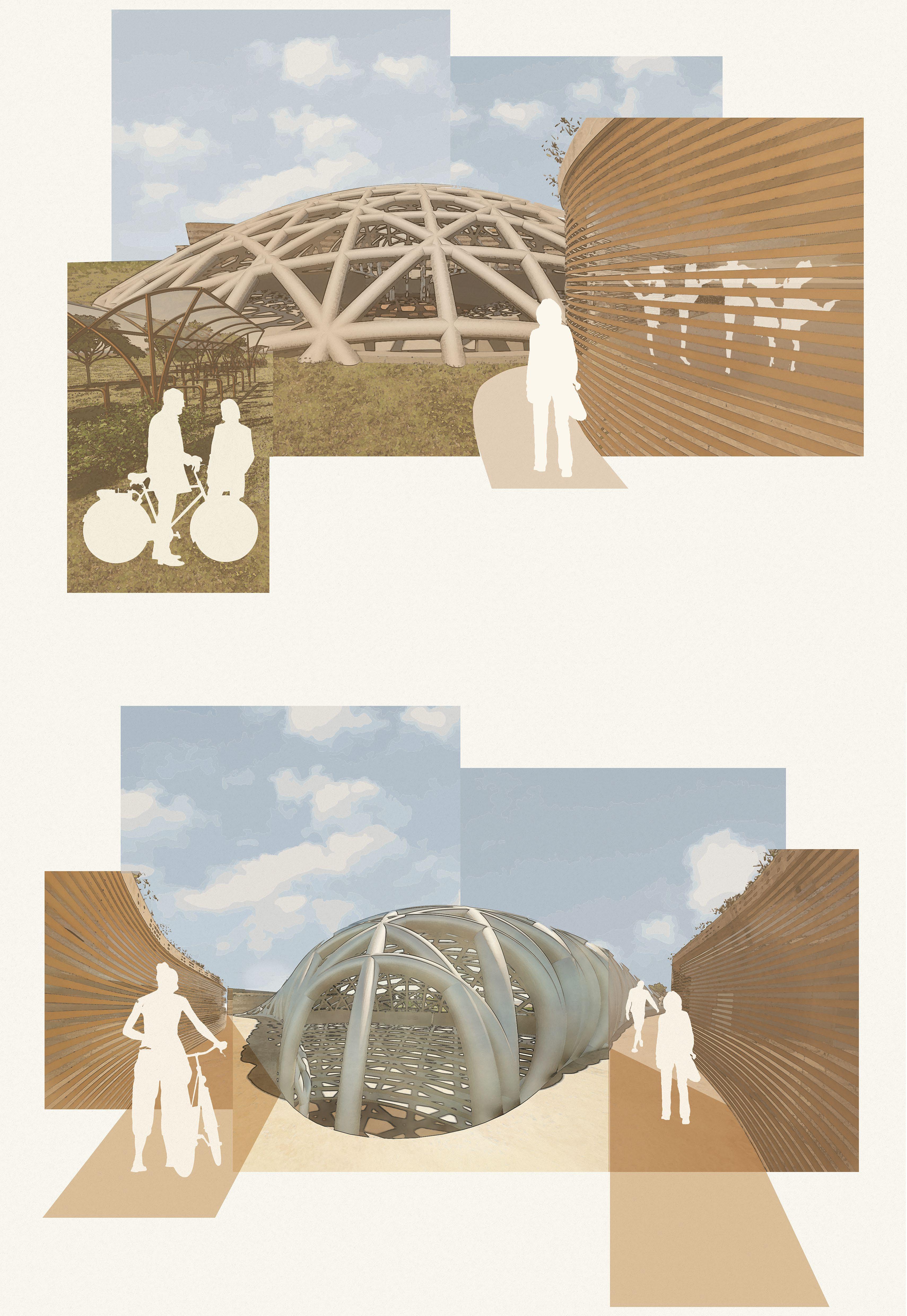
Shania Burrage
Born 16/09/1999 in Sible Hedingham, Essex Benoy Part 1 Architecture Assistant

ARB Part 1 Architecture graduate, Ravensbourne University London
Email shania1609@gmail.com
LinkedIn www.linkedin.com/in/shania-burrage Tel +44 7843118472
In 2022, I graduated from Ravenbourne University with First Class Honours in BA Architecture. August 20222023, I undertook my Part 1 Architectural Assistant year out at Benoy, London Studio. September 2023 I begin MA Urban Design, with the plan to get into transport infrastructure. I’m currently a student member of the WCCA, where I contributed towards student events that help BA students network and learn work-life skills, and I myself attend events and study trips. Throughout my time, I have been greatful to take on different challenges, learn, and meet some very interesting people along the way.
“To create one must first question everything.”
Achievements:
-’Tenacity’ Award by Asseal Architecture and The Worshipful Company of Chartered Architects
-RIBA Best Future Architect in London South East Region 2022
-First Prize Design Concrete Competition set by The Concrete Centre
-Eileen gray
Woolwich Connected
Final Major Project / Year 3 Term 2 & 3
Awarded RIBA Best Future Architect in London South East Region 2022
Location: Corner of Powis and Macbean Street, Woolwich, London SE18
The purpose of Woolwich Connected will be to provide a bridge between academia and the local community by hosting various workshops, events, studios in residents, networking events, exhibitions and performances. During the regeneration phase that Woolwich is facing, due to the arrival of the Elizabethan line, it is imperative that residents are considered and given a physical space where they can reflect on how the city is evolving, and how it should develop in the future.
Woolwich Connected will be a collaboration between Urban Rooms and the Royal Borough of Greenwich. Working together, the council and Urban Rooms will encourage the acceleration of the creative industry and foster meaningful connections between people + place. It will be a space where people can go to understand and get involved in the past, present + future of where they live, work + play.
This will be achieved by:
- Performances of work from students of the nearby academic areas like University of North Greenwich + Ravensbourne.
-Areas for discussions, debates, talks, and enquiry for residents and visitors alike who wish to contribute towards the discussions on regeneration.
-Studios to hire for residents and students of the borough to support them in the creative industry and find employment/get spotted for their talents by investors/employers.
-Offer collaborative spaces.
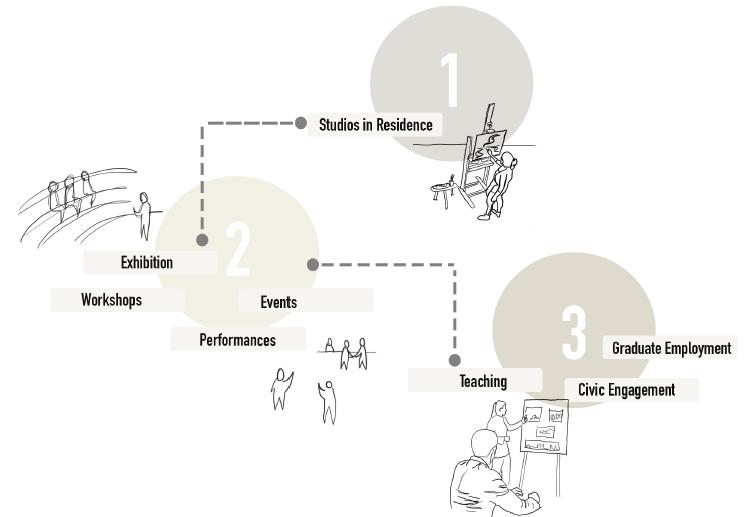
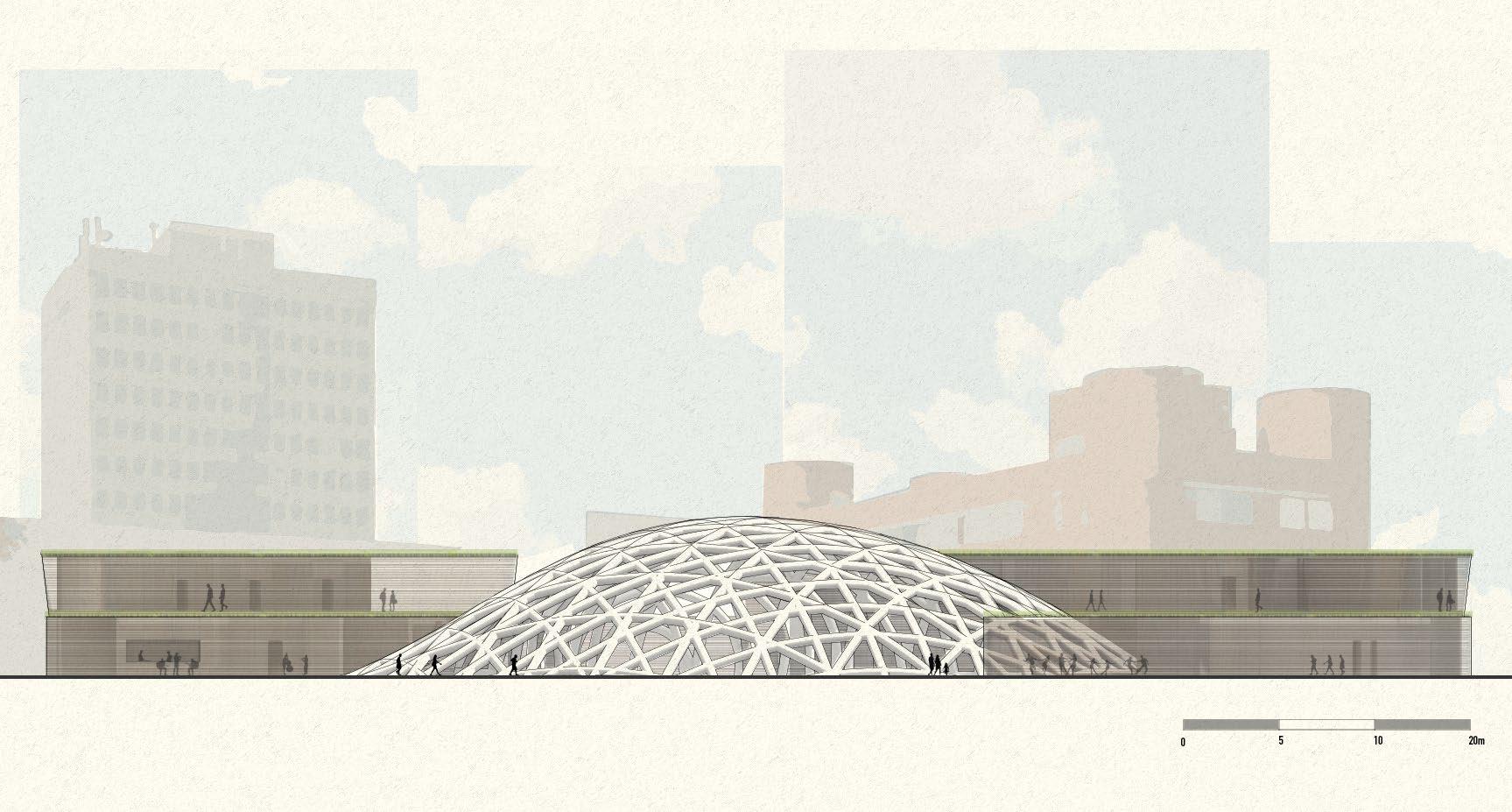
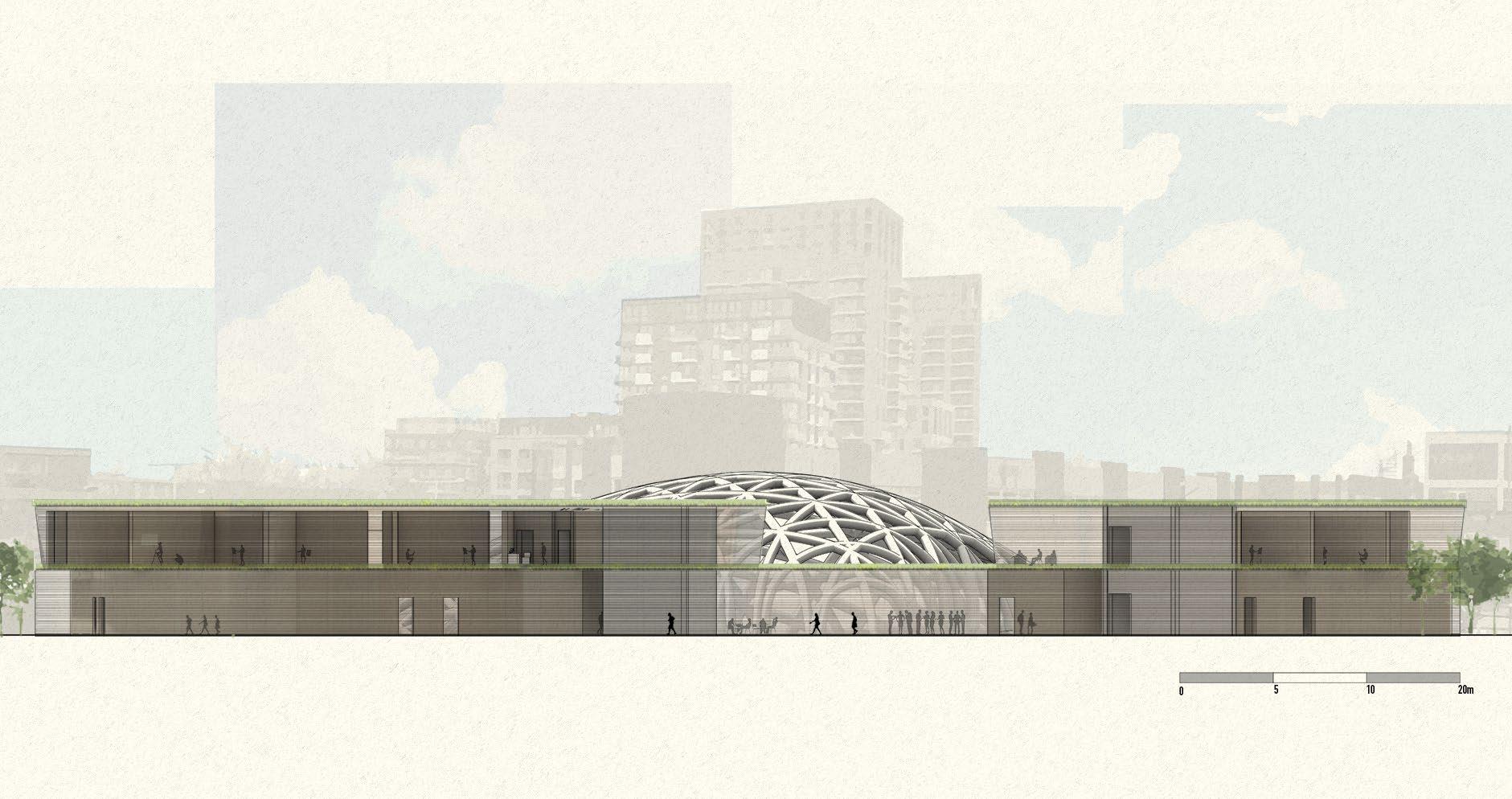
Plans: Floor -2 & Ground Floor

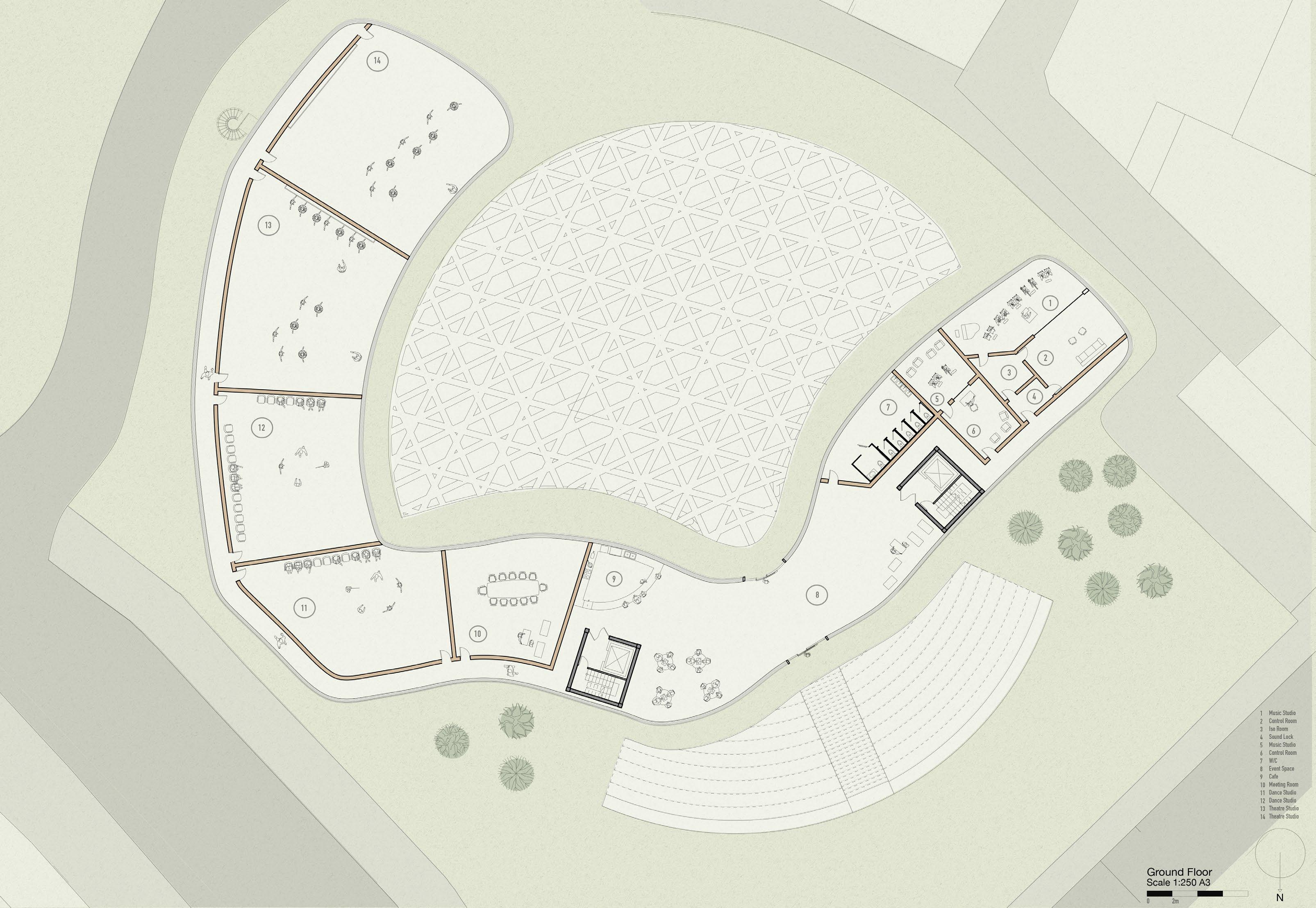
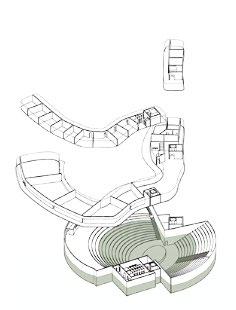
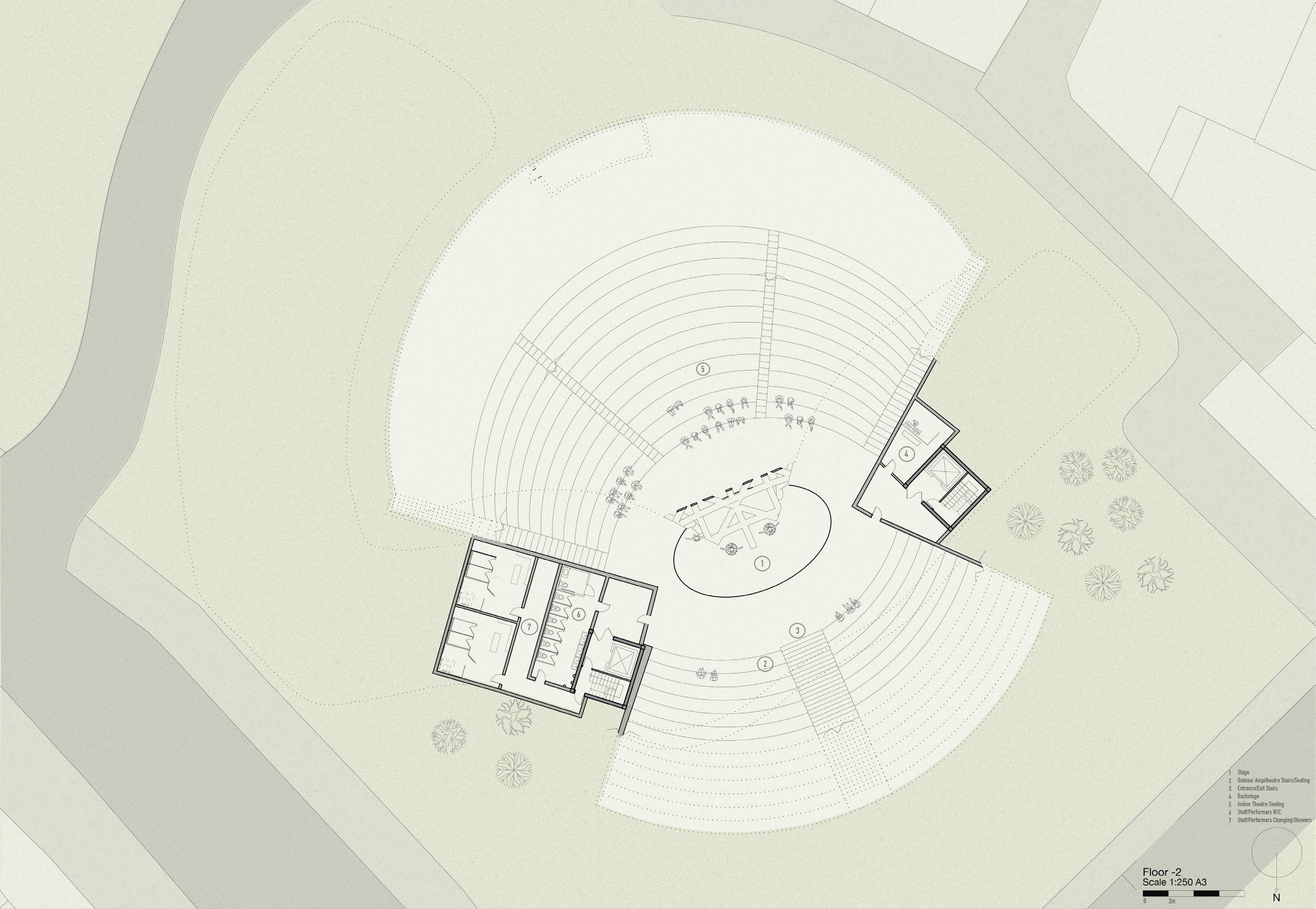
Landscape + Community
Landscaping is a huge part of any building project. Here, community engagement is amplified with the additions of planting, bicycle parking and ‘street theatre’. The steps for the street theatre act as; a meeting space, a seating place, a performance area and an interactive landscape for children. It also softens the corner to the street, bringing a welcoming and open feeling to the site.
Opening the Murray’s Yard allyway, leading from Powis Street, opens foot/bicycle traffic and links the two sides together, forming a bridge for the community. It goes without saying that all buildings should be accessible to all, landscape too, so the site will be implemented with access ramps from the street on both the east and west.
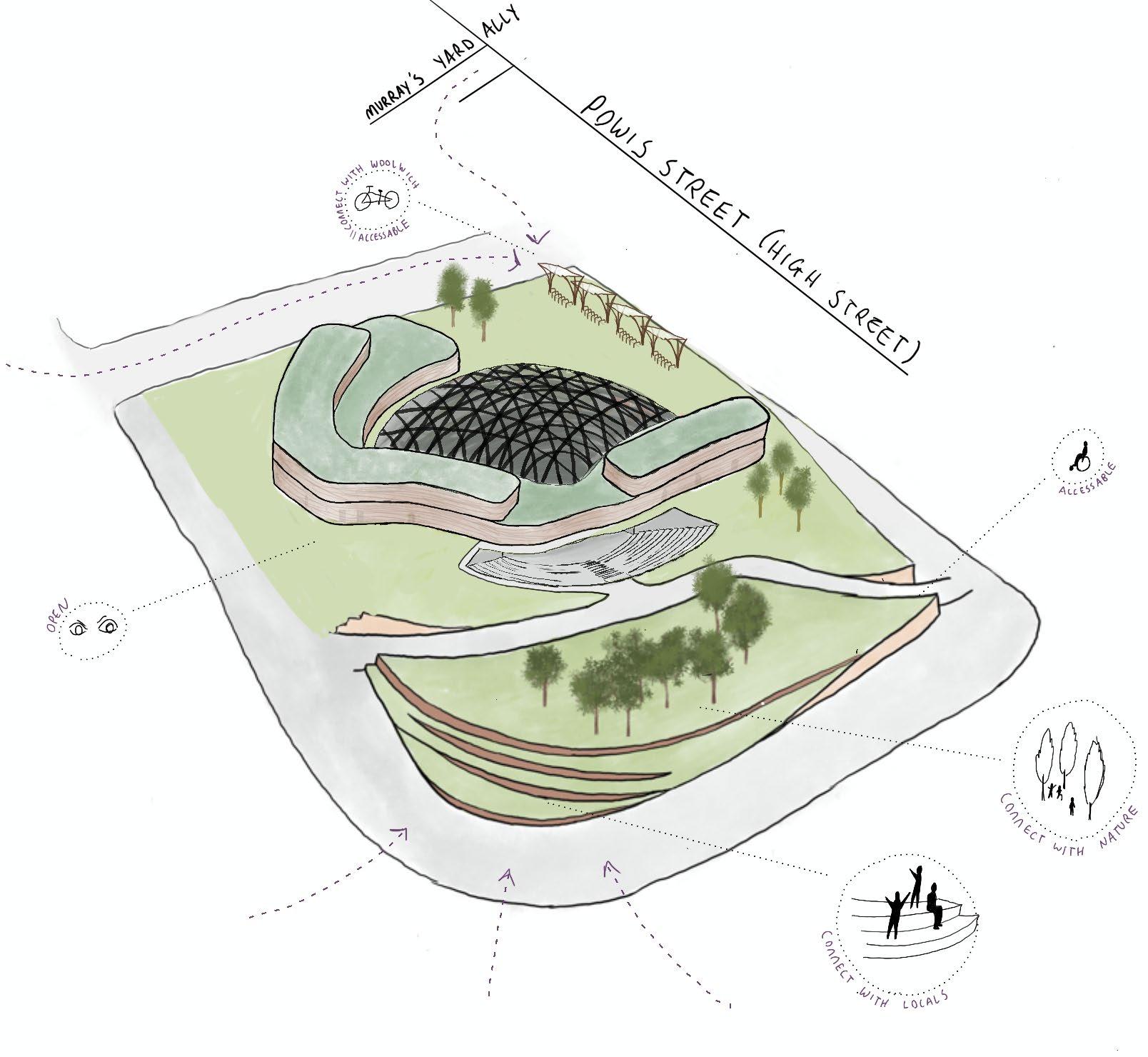
Final Renders
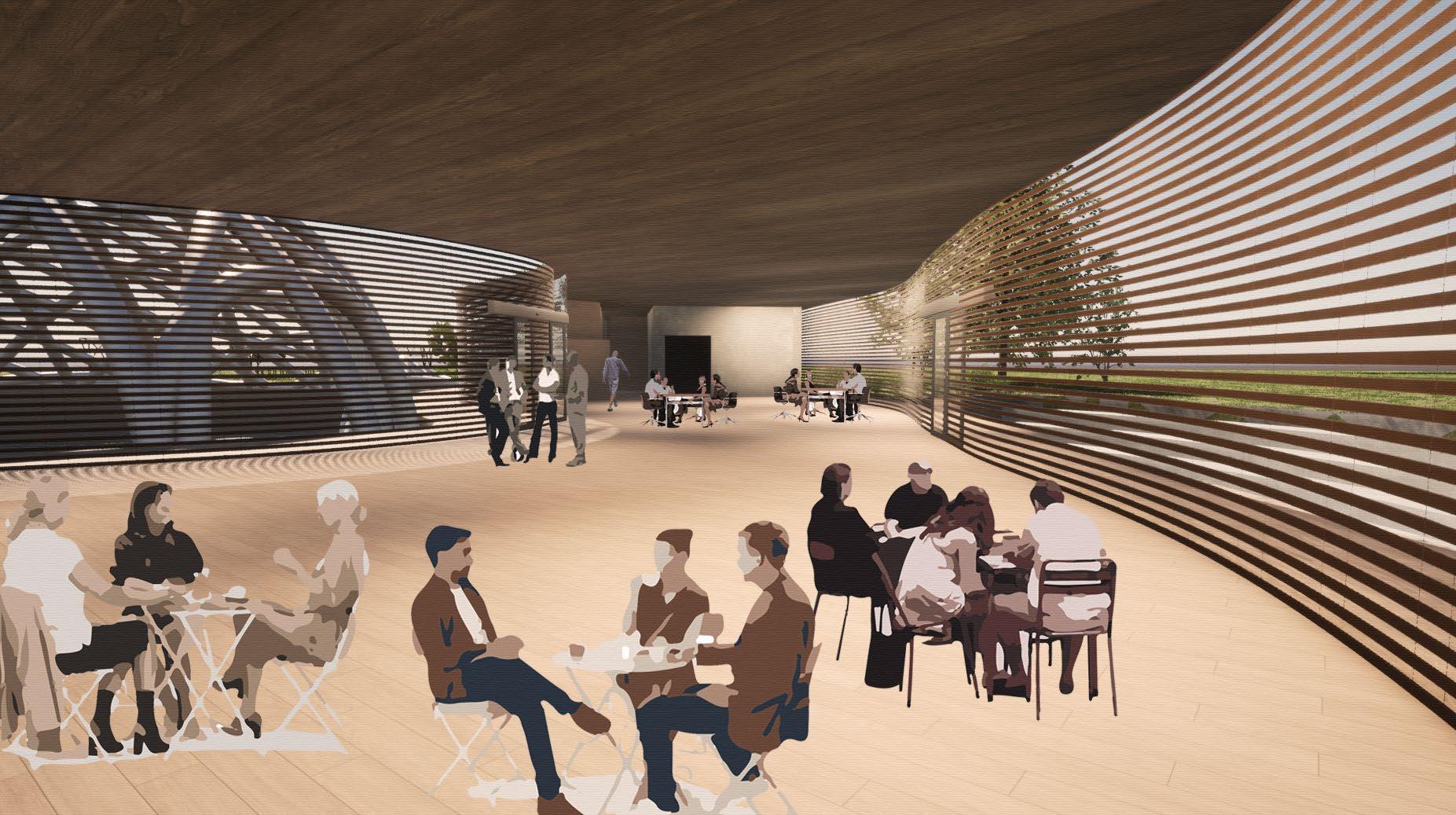
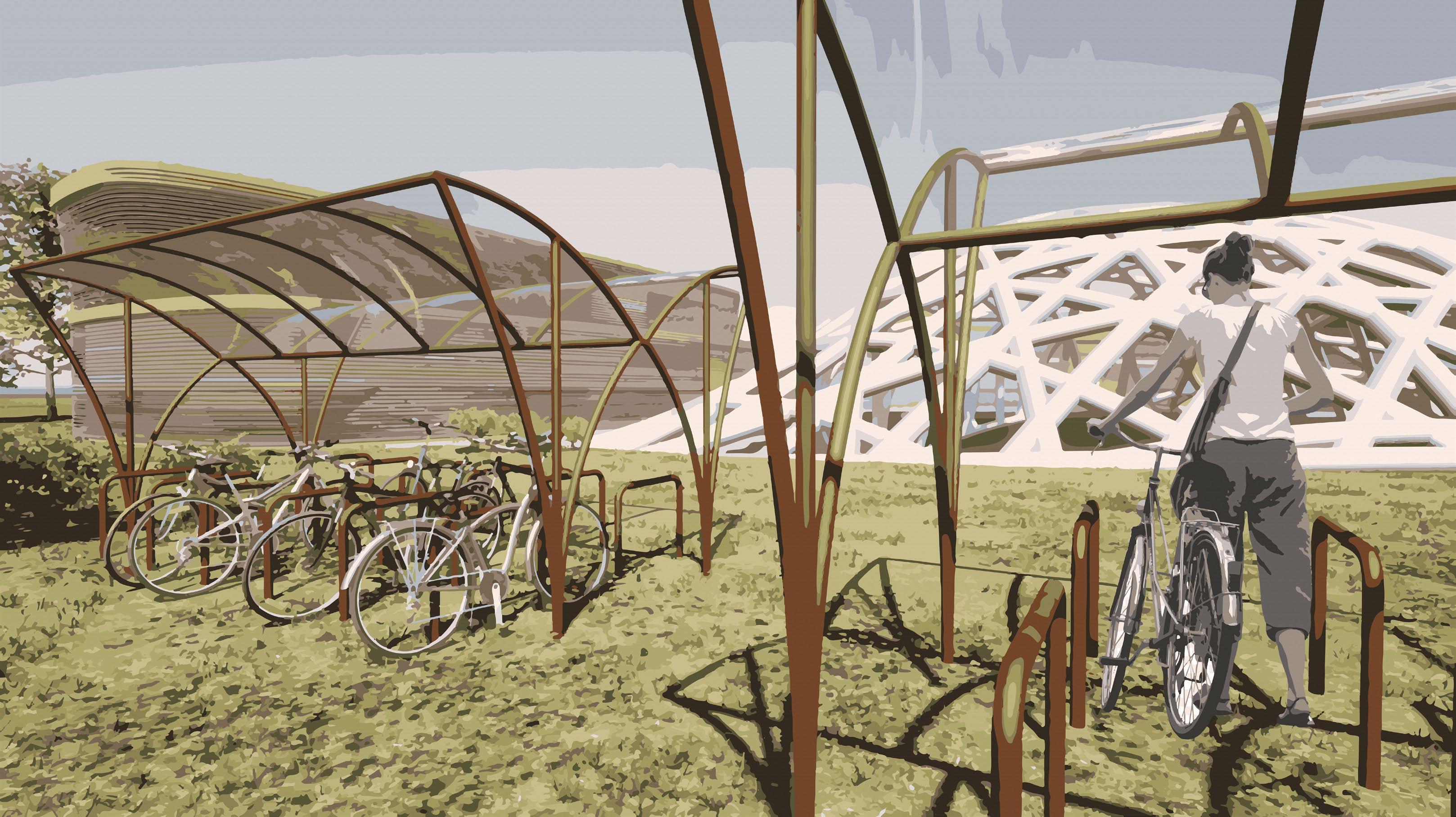
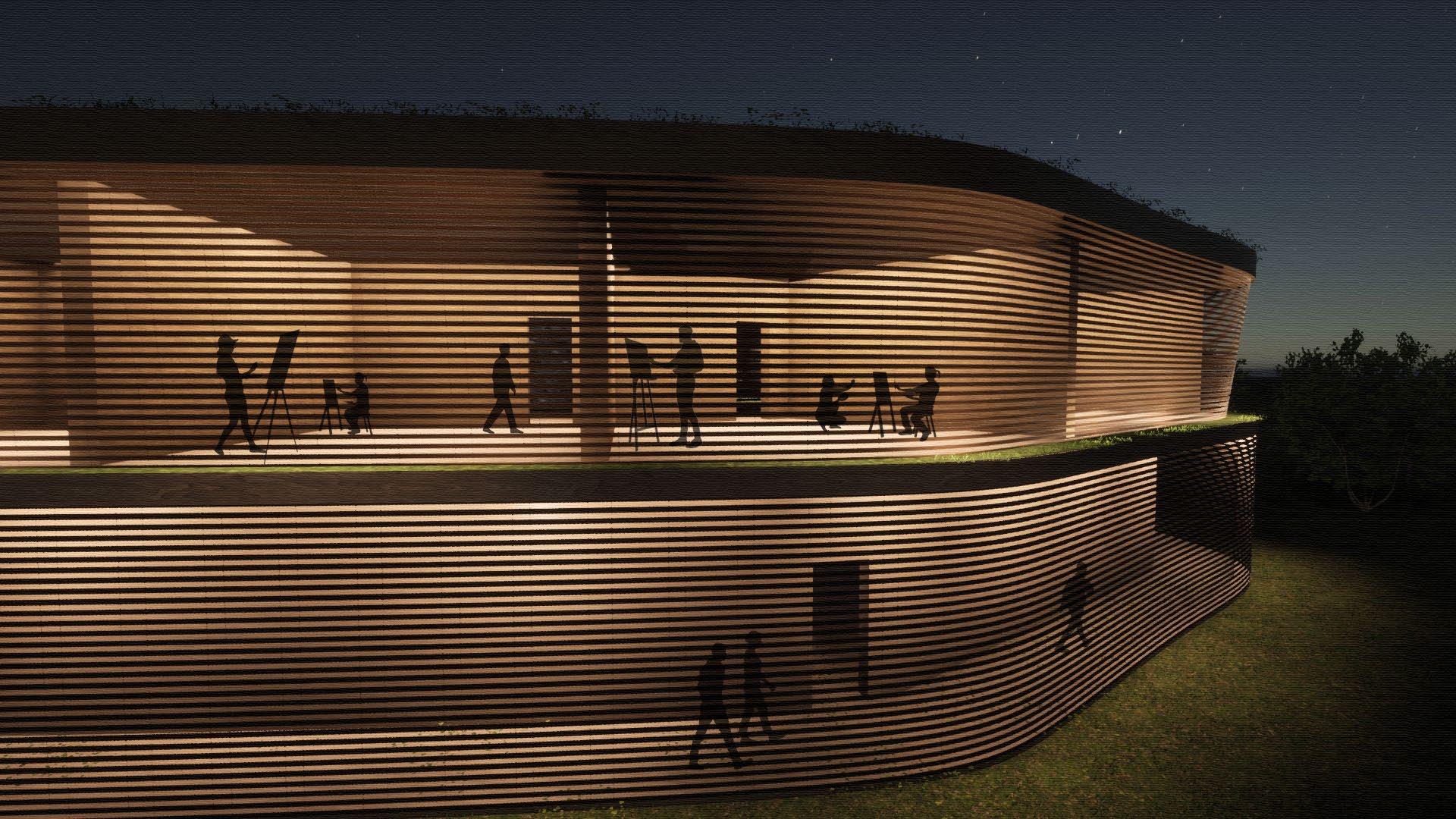
Materiality
Cross Laminated Timber (CLT) is used for the majority of the building project. The CLT is to be left exposed on walls and ceilings, providing a warm exterior, and reducing the need for unnecessary extra materials. The roof structure is composed of steel funnels, that pass the load through to the substrate layer. The floor connection is then hidden within the stage, and the roof cuts the stage into two halves. One side provides a stage for the amphitheatre stairs, and the other for the indoor theatre. This allows for multiple performances to take place at once, and gives a stage that performers can weave in between the ‘feet’ of the roof structure.
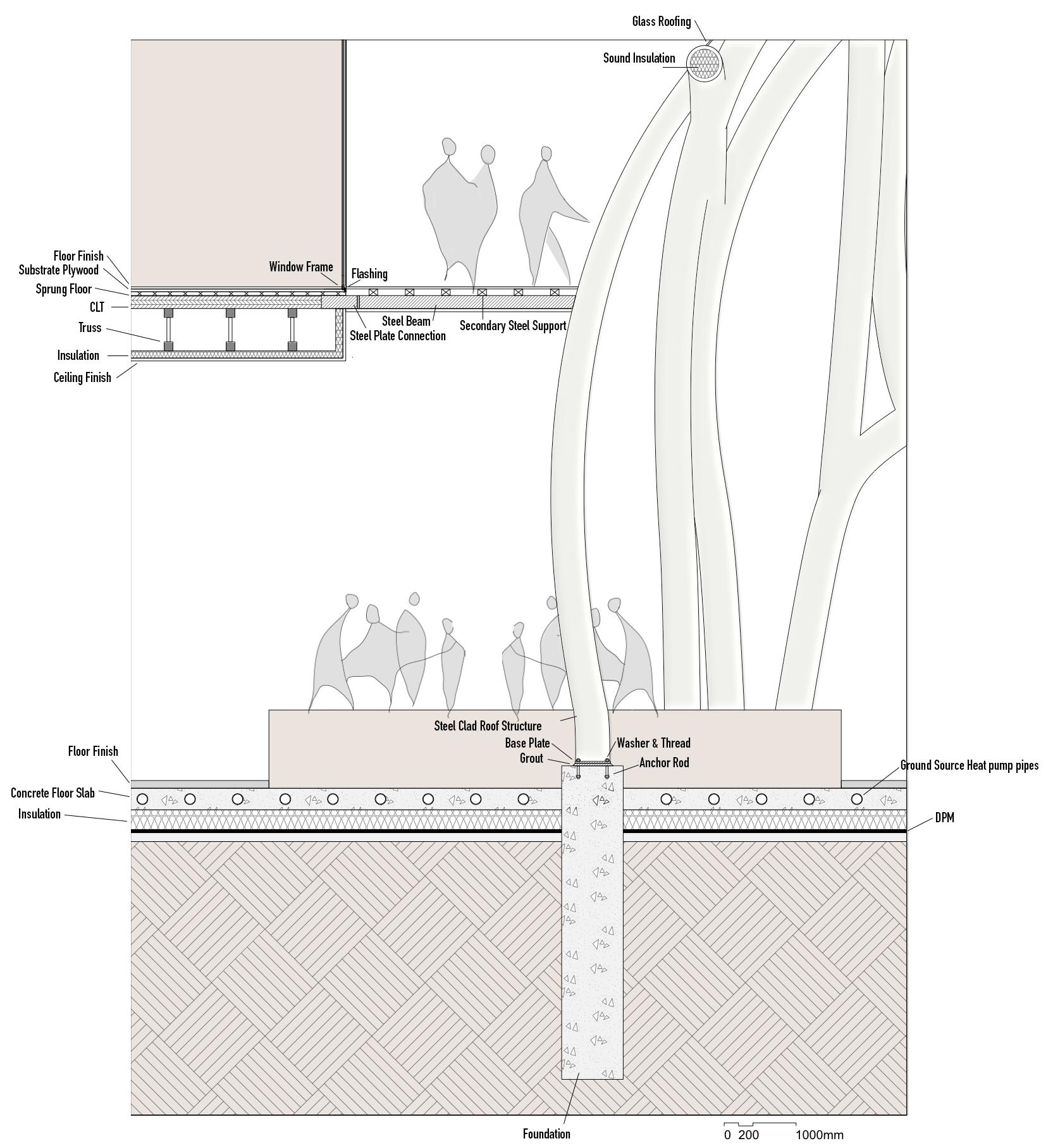
Final Renders

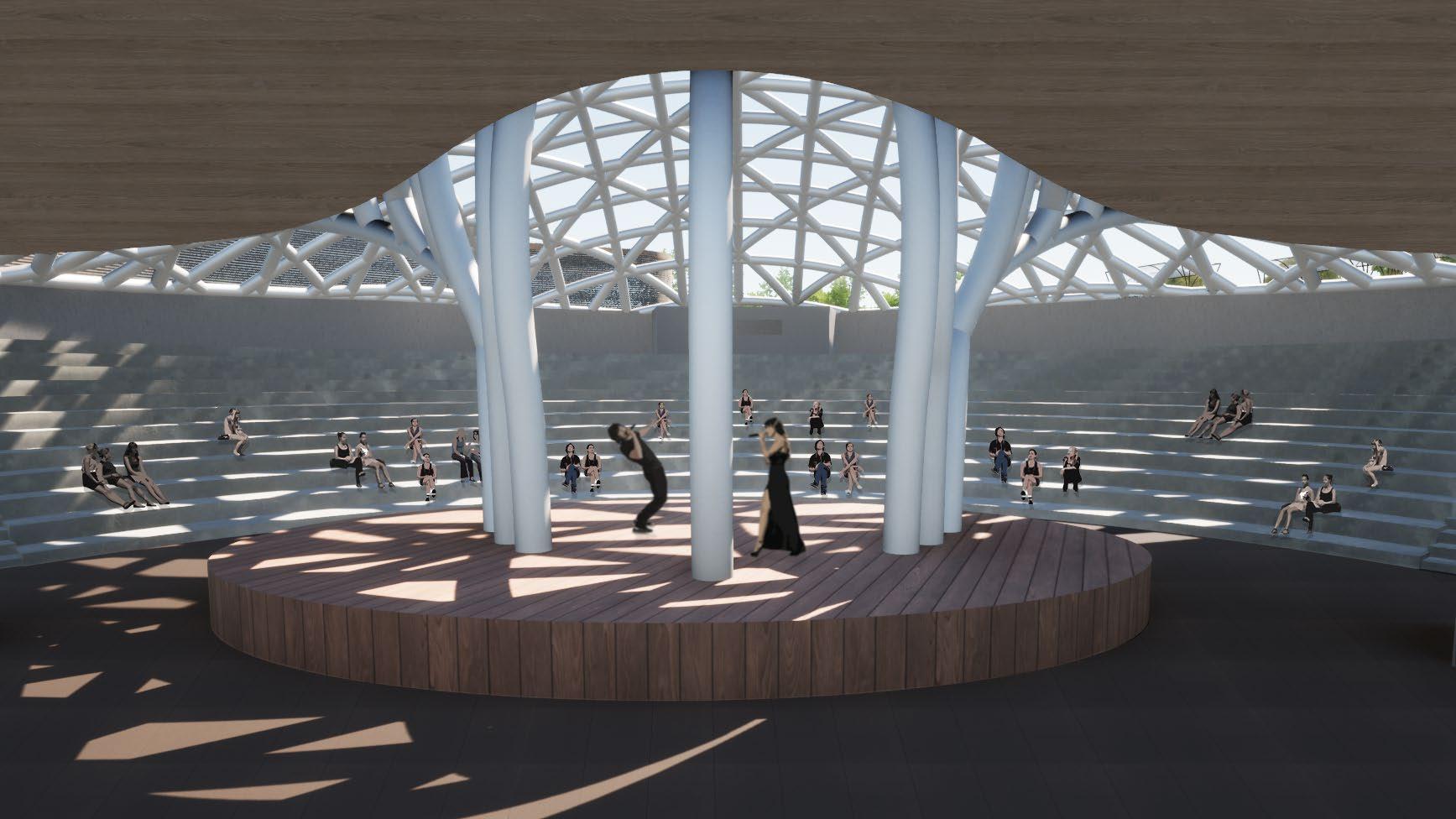
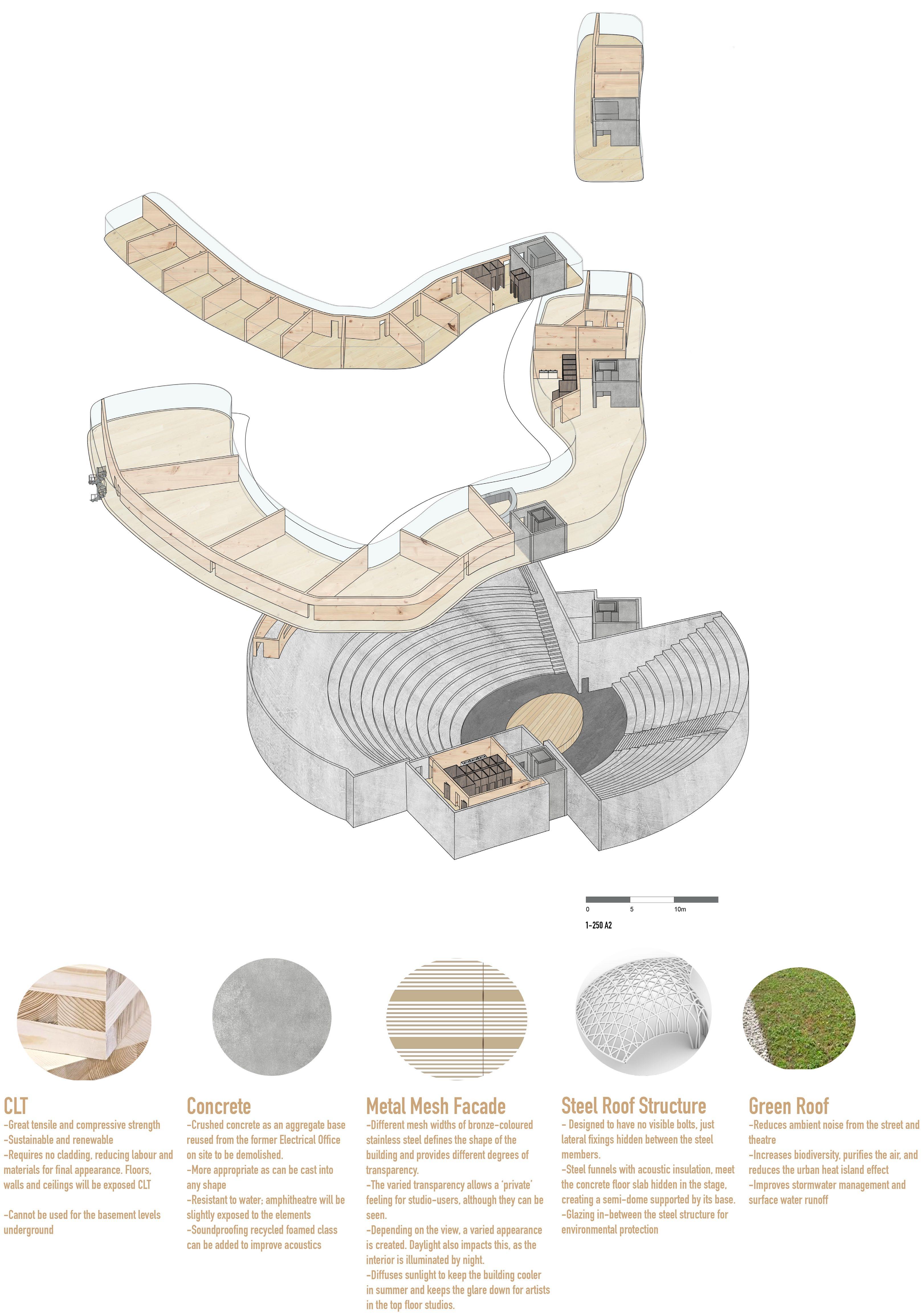
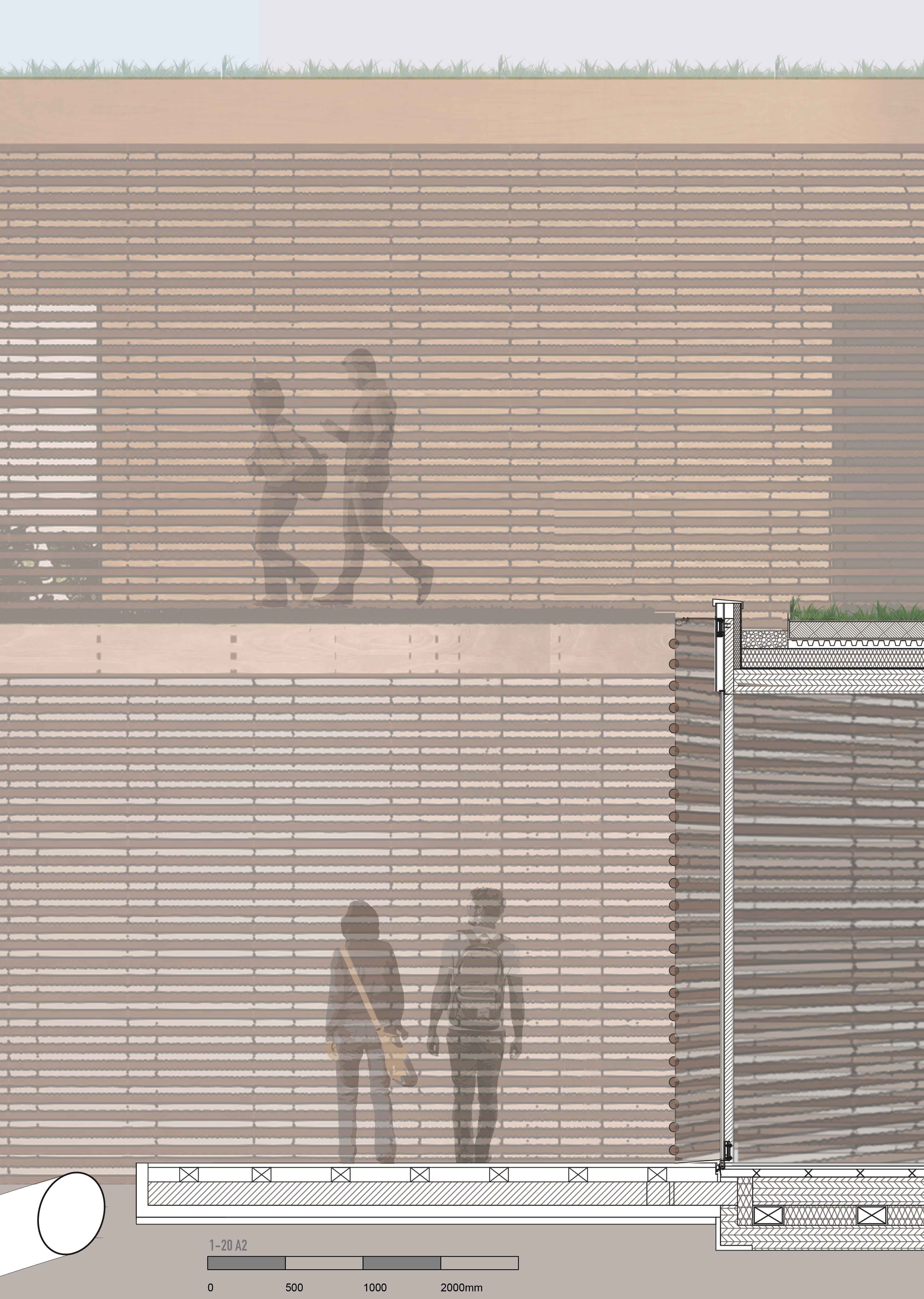

The Coal Pier
Year 3 Term 1 / External Competition set by The Concrete
Centre - Awarded First Prize
Location: Thames Path, Woolwich, London SE28
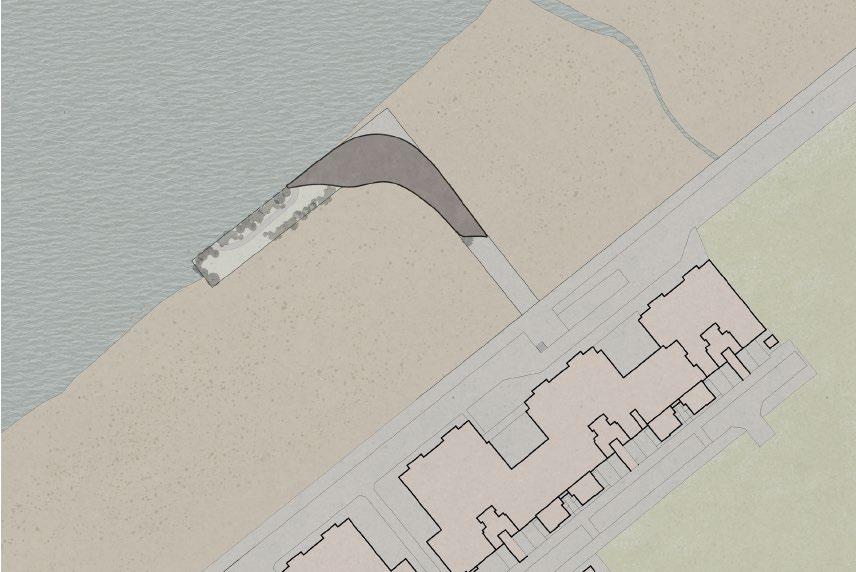
East Elevation
South Elevation
With COVID-19 at the forefront of everyone’s mind’s, this project challenges the changes in the way we humans work. Many people, I included, faced the dilemma of ‘work from home’. Our bedrooms, living rooms or any available spaces were re -imagined into a home office of some kind, taking our relaxing spaces, and turning them into a place of work. It is key to maintain separate spaces for work and homelife, otherwise the two may overlap and people may find it difficult to associate their home spaces with a place for rest and recuperation.
For this project, the users will be at the heart of the design process. By studying the nearby dwellings, we can see a large percentage of occupants have a higher and intermediate managerial position, administrative or professional position. Ample work-from-home space is necessary for these people along with students or the self-employed. Also, the lack of garden space due to the majority of apartments being without balconies, presented the need for garden space. Many studies have shown that having access to nature increases quality of life, especially whilst living in the city. This is how I will benefit the local community. Local economy will boost after the increased work output from residents as they finally get a creative space, perhaps new businesses will even be born. The space will also feature a cafe so this will gain a revenue. Environmental wise, I noted a few species of birds on the pier whilst on site visit. By planting specific trees/shrubs we can encourage further nesting and food source. Naturally, increased foliage will improve the air quality of the site and greatly enhance the aesthetic.


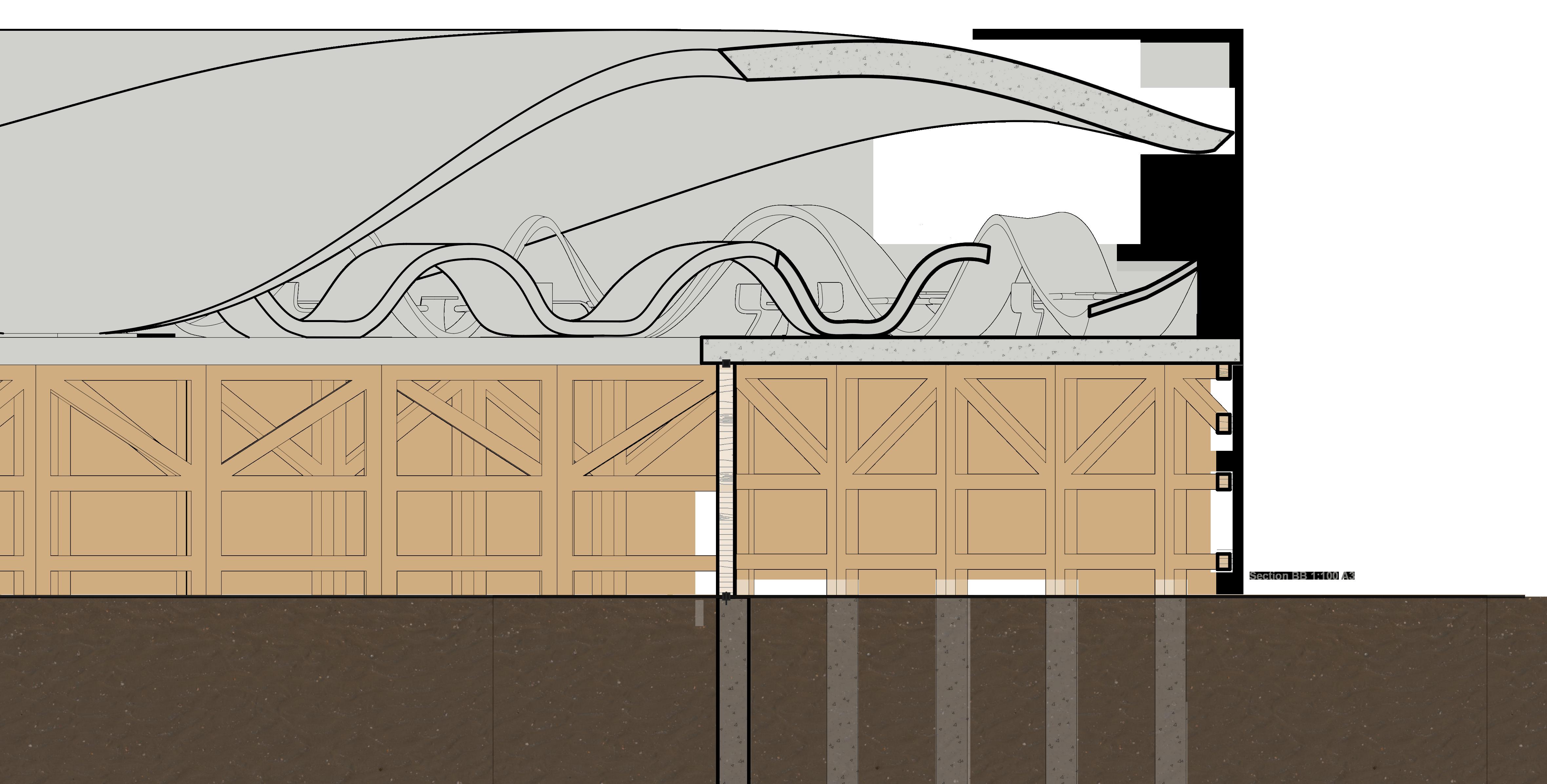
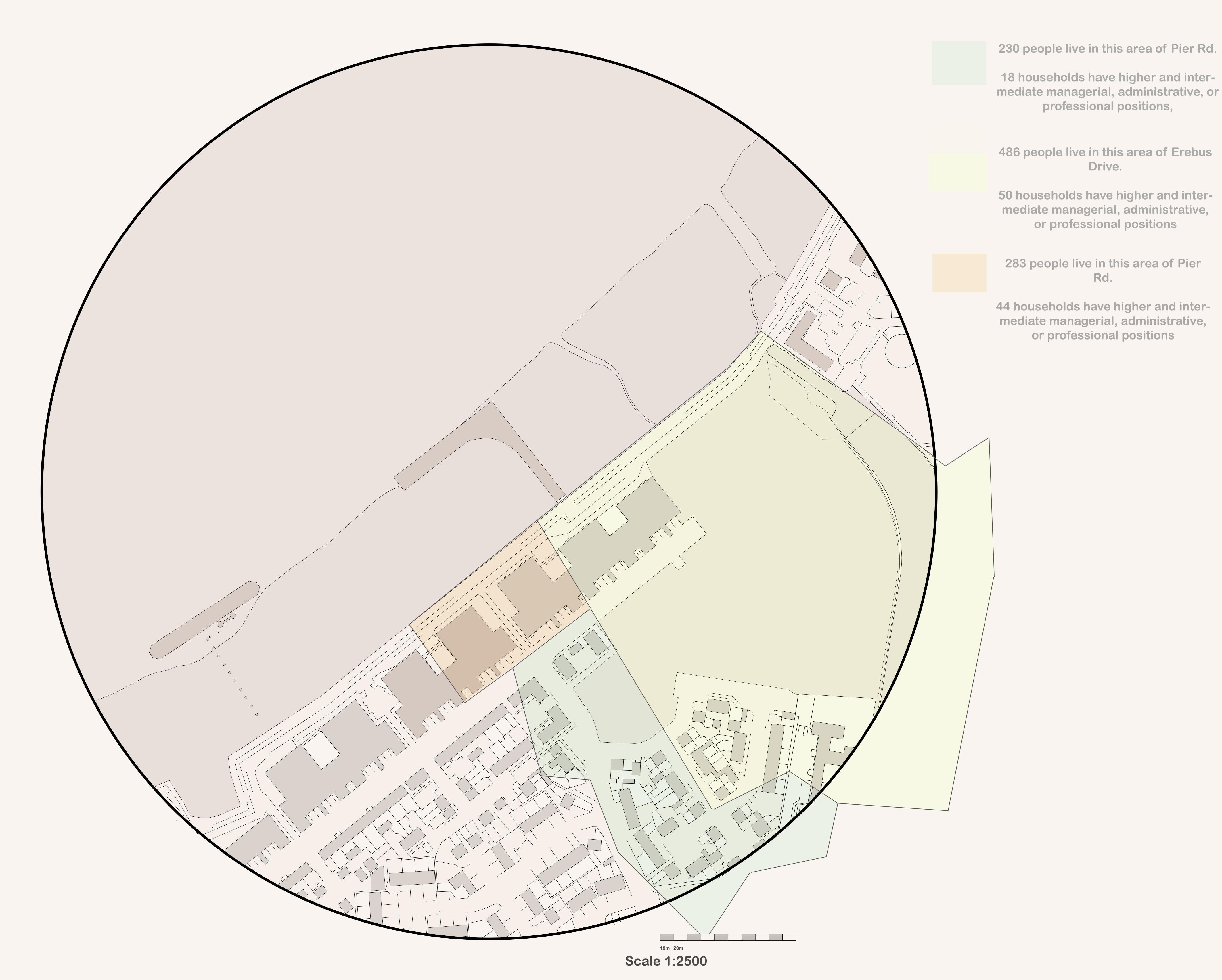
Sustainability and Environment
Concrete can often be an environmentally damaging material. The brief set out that it must be a concrete structure, and so I challenged myself to think of how it could be made as sustainable as possible. The embodied carbon of concrete can be drastically lowered if the ingredients for the concrete mix have been recycled. Therefore, The Coal Pier features recycled components as seen in the diagram below For reinforcement, the structure will have reused steel poles, and the concrete will be sprayed on.
The concrete’s interesting edge, is the use of recycled foamed glass, to provide acoustic insulation. Foamed glass have a plethora of benefits, including it being lightweight in nature. This decreases landfill on dismantle, lowers transport costs and reduced manual handling to name a few. It is also non-toxic, fire resistant and non-water absorbent. The structure is slightly shaded in winter months, but the majority will be able to absorb the suns heat due to the dark fly-ash colour in the concrete mix, or seep through the glass facade. In the summer, it will receive natural cooling via evaporation of the Thames river.
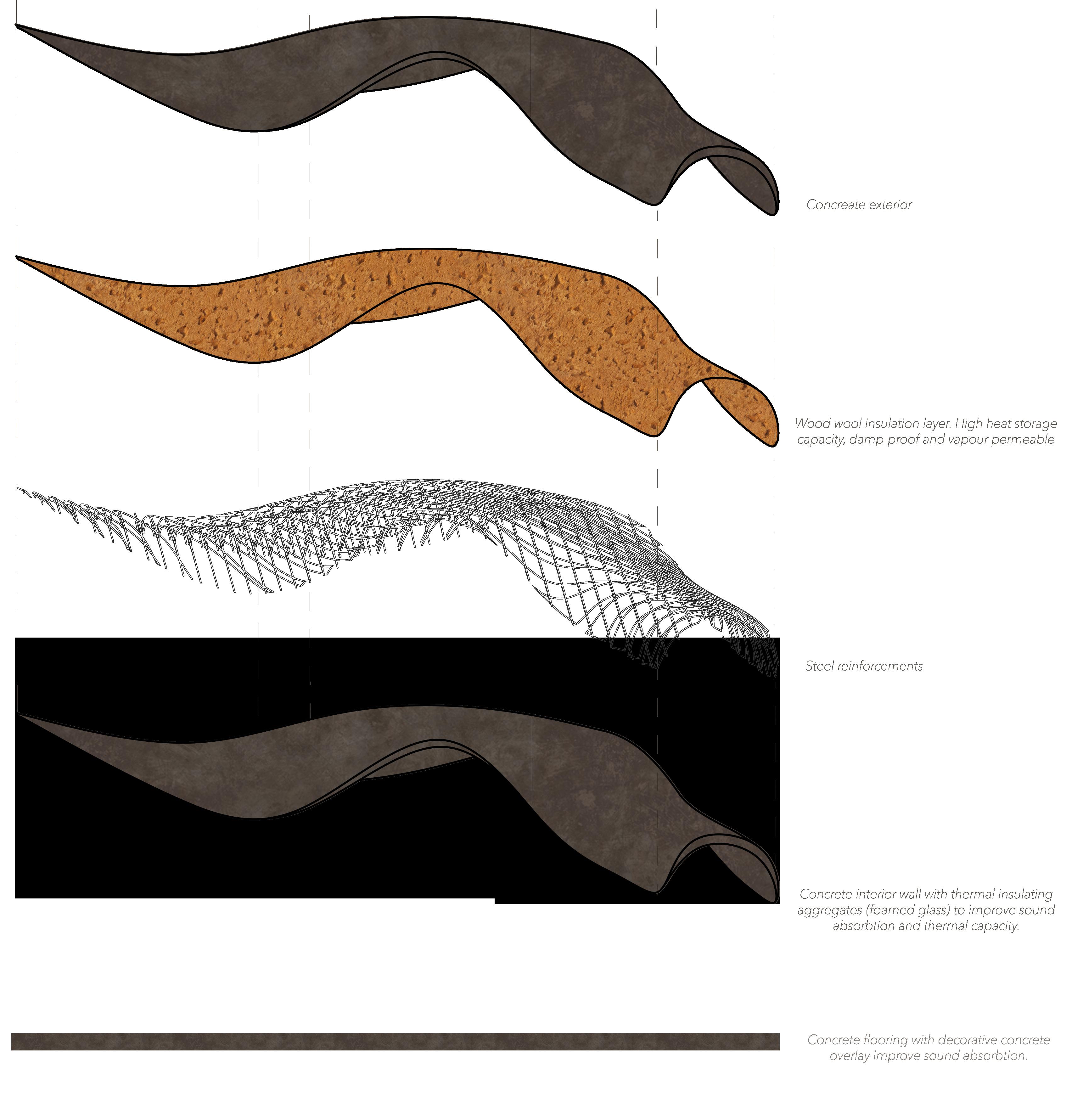
Final Renders
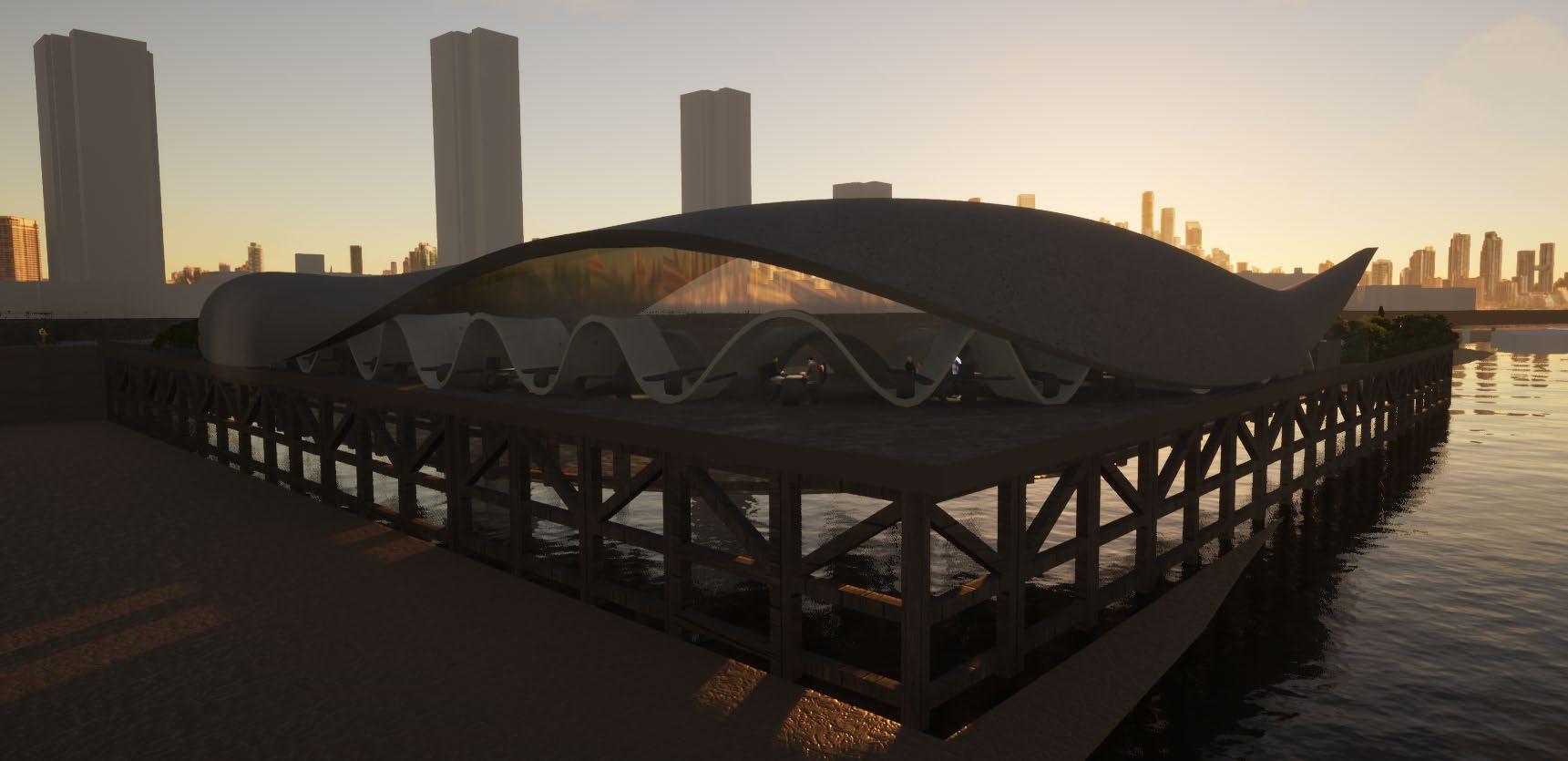
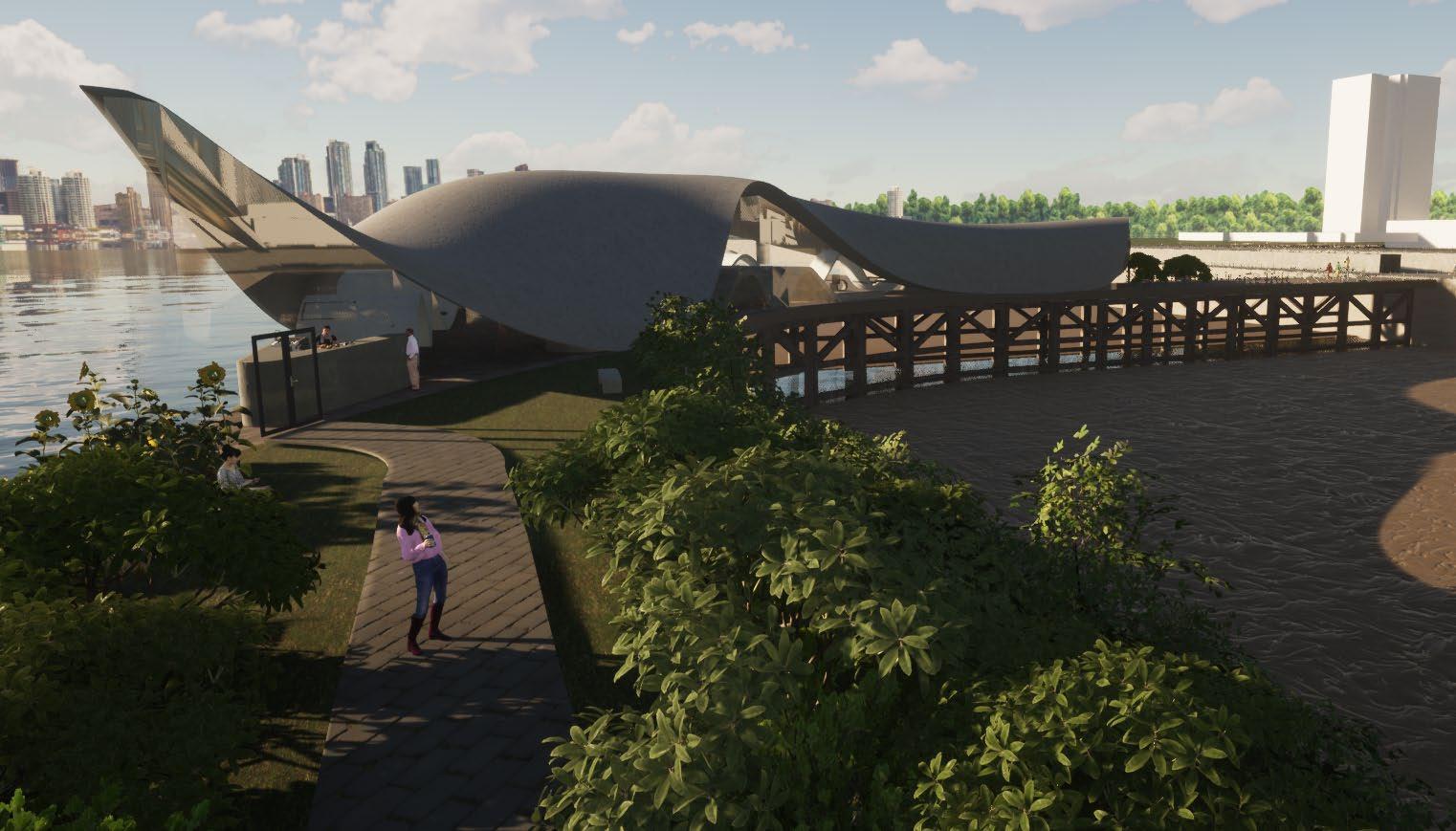
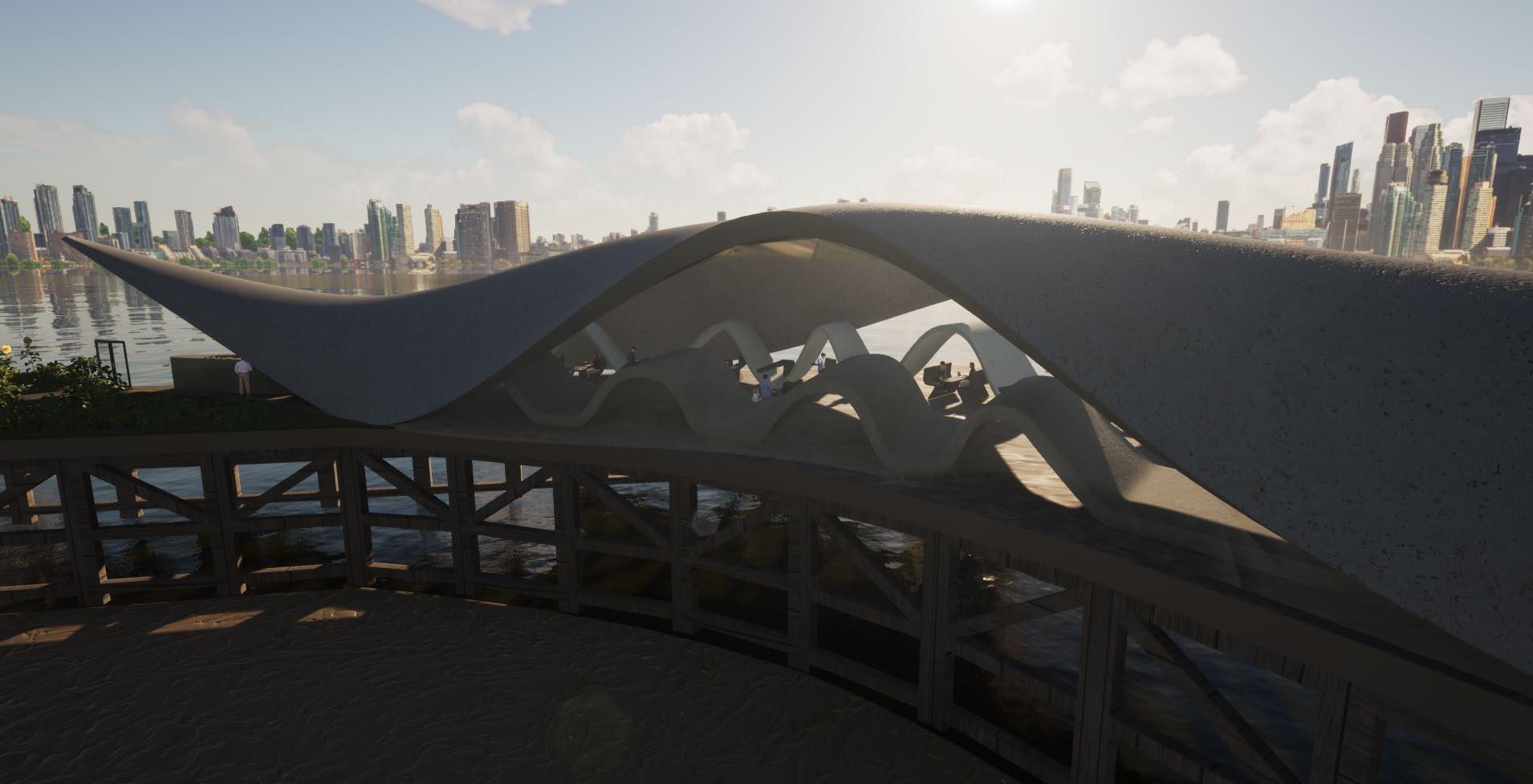
Workspace
By being mindful of the acoustics, we can ensure a comfortable working space for the users. Concrete is quite literally a ‘running’ theme throughout, with large flowing furniture creating workspaces. Under the curves offers a quiet and private working space, apt for business meetings, whilst the top is more open, more suitable for a student. The wave like pattern flows through into a cafe/bar area where hot beverages and lunch is available to be enjoyed in the common area or outside in the botanical garden. The botanical garden functions with the use of a reinforced plastic tray to hold the growing materials/roots.
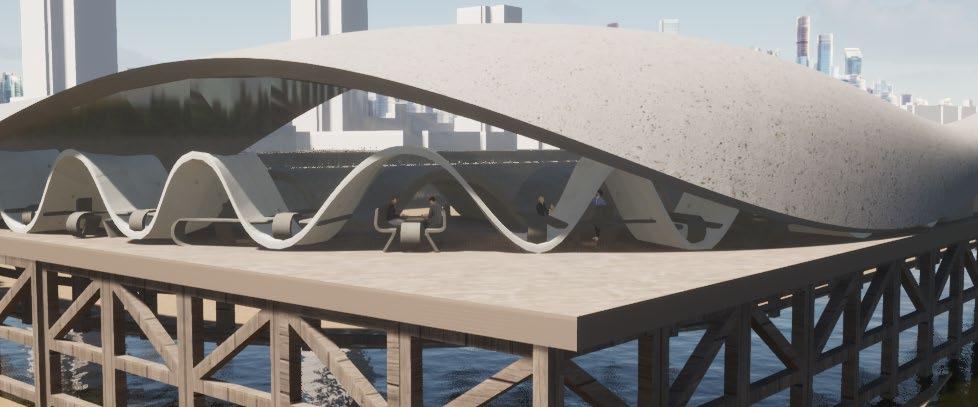
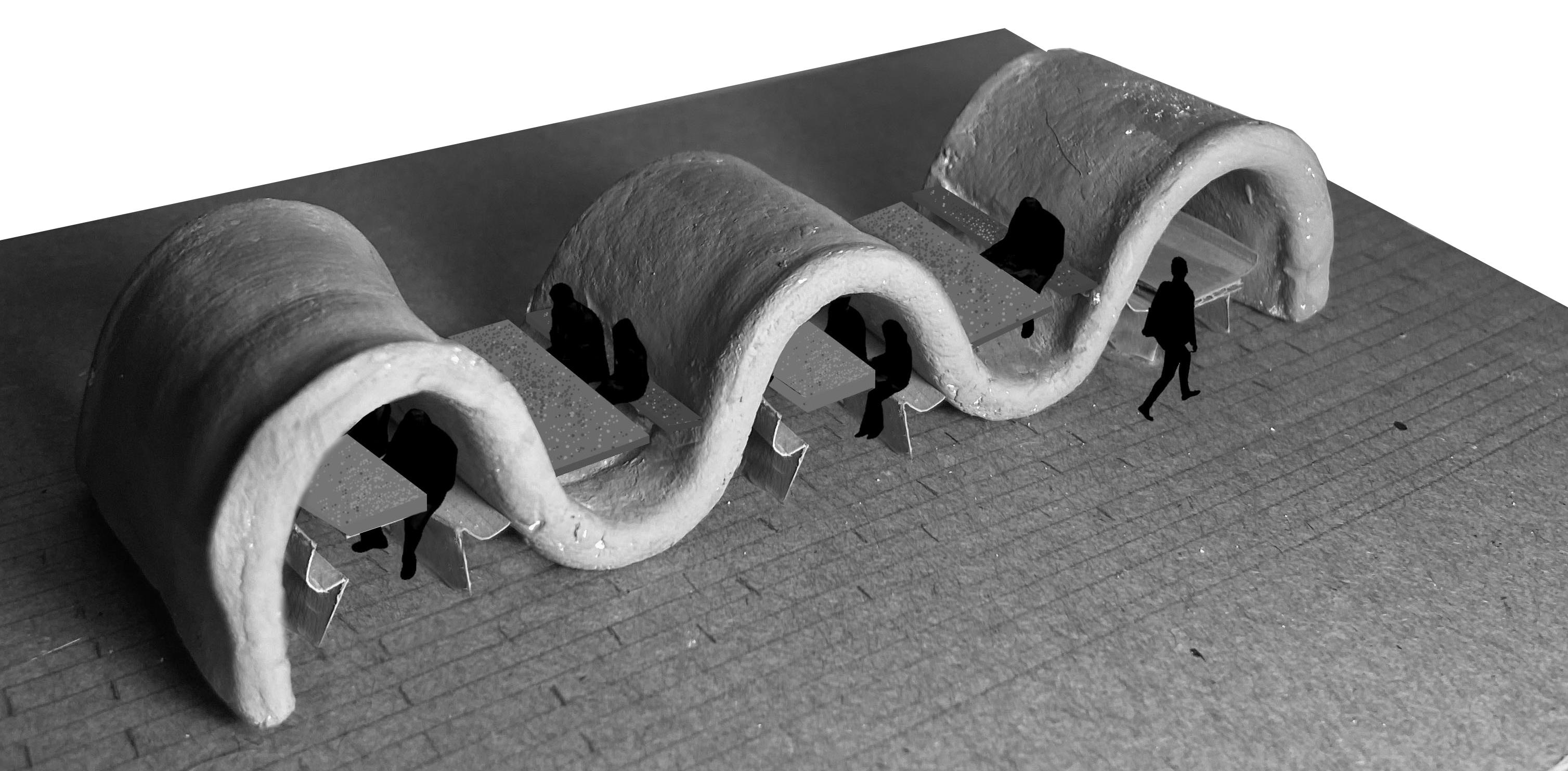
Year 3/Dissertation: THE GUISE OF REGENERATION, An investigation of increased transport infrastructure on gentrified urban communities
Ravensbourne University London | BA (HONS) Architecture | ARC16301 | 17.12.21 |
Abstract
Word Count: 6692
In this dissertation, I will be investigating the impacts of increased mass transit systems on the gentrification of urban communities within East London. I argue that the gentrification following increased transport infrastructure is wrongfully represented under the guise of regeneration. The methods I use in this discovery include identifying what has been taken from the communities and the changes that have undergone, whilst facing regeneration schemes. Furthermore, turning to Newham as a case study, I will discuss how gentrification is masked by regeneration schemes during urban renewal, which disregards the existing community and history of an area. The evidence collected shows that these schemes are often placed within proximity to mass transit systems in councils of higher funding, and result in a loss of identity, business, and a change in social structure and demographic. I suggest the resolution to extreme levels of gentrification, is to preserve local community by protecting social housing and businesses in order to cap displacement.
Year 2/Urbanism, History and Theory of the City Essay: Is the reclamation of brownfield sites when creating parks and public spaces a way of increasing environmental sustainability? Does this approach also boost economic growth - using Olympic Parks as a case study.
Abstract
The comparison of the value of greenfield and brownfield sites and the difficulties using them; this study considers how public spaces can be beneficial to the local community socially and economically. Mega-events, such as the Olympics, create a reason to reclaim used land and encourage sustainable thinking and a better quality of life through the creation of public urban space, leading to economic growth and more-developed cities. This study investigates the successes of Queen Elizabeth Olympic Park in East London whilst comparing it to other sites such as Rio’s Olympic Park. Overall, drawing together a new model for future development in order to improve sustainability of mega-events whilst contributing towards local communities.
Year 2/Urbanism: History and Theory of the
City Group Project Elements Of The City: St Stephen Walbrook.
By Amienatt Salisu / Shania Burrage / Stanley Martin / Candace Sobers / Royem Toyem / Joshua DalsanAbstract
Why do we continue to suppress biodiversity with award winning architecture? Situated within the City of London, the Walbrook Ward is named after a once free flowing stream that ran from north to south, and passed by St Stephan of Walbrook, the famous church that we will be analysing within our group project. The river, now submerged, played a great role in growing industry, serving markets and organically supporting the direct urban environment that surrounds St Stephan of Walbrook. Although the covering, has allowed for more space to be occupied and further industry to grow, we intend to trace back to a time where one could hear the sound of bustling waves racing towards the Thames, during a Sunday service. We will question whether the covering of the river has been justified, how it has affected today’s communities, and communities once existing, and draw links between the growth of trade and the direct impacts a river has on a buildings material qualities over time.
Year 1/History and Theory, Will sustainability give a new direction to design?
Abstract
Close proximity to water and food,heat, and communityis all we required in times past. But throughout societal change, humans have become insistent on convenience. If we are cold, we do not reach fora jumper, we turn up the heating. If we need more houses, they rise. This overwhelming demand for convenience has taken a toll onto climate change in all manners of ways, but buildings especial-ly. Cheap materials and cheap labour led to housing which needed intensive heating, using our precious fossil fuels. More often than not this resulted in more money being spent down the line on bills rather than investing in a better constructed building.

